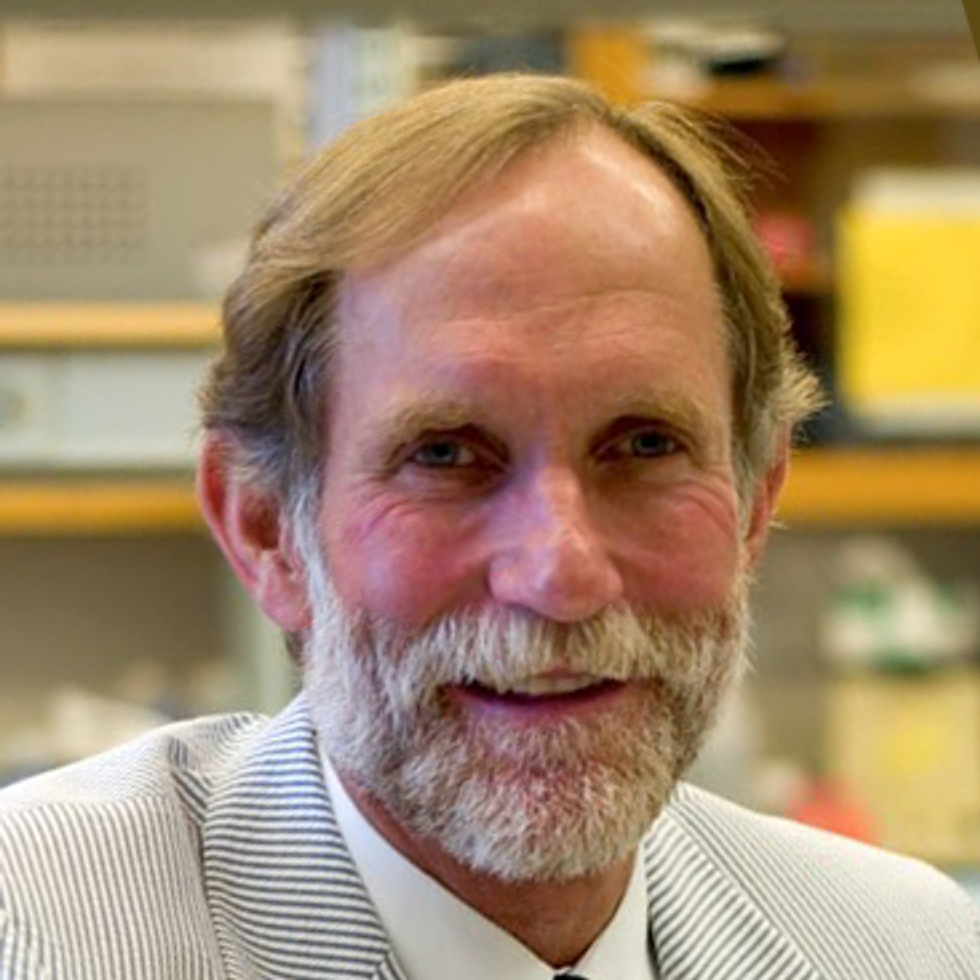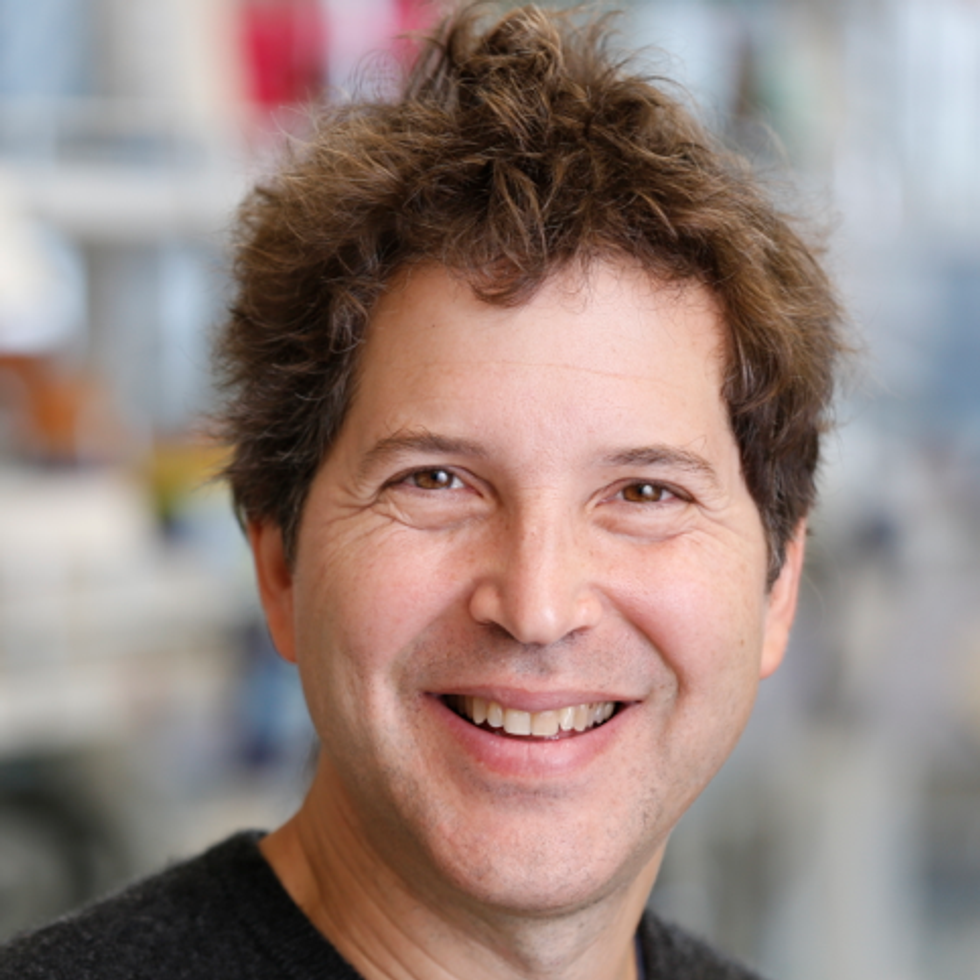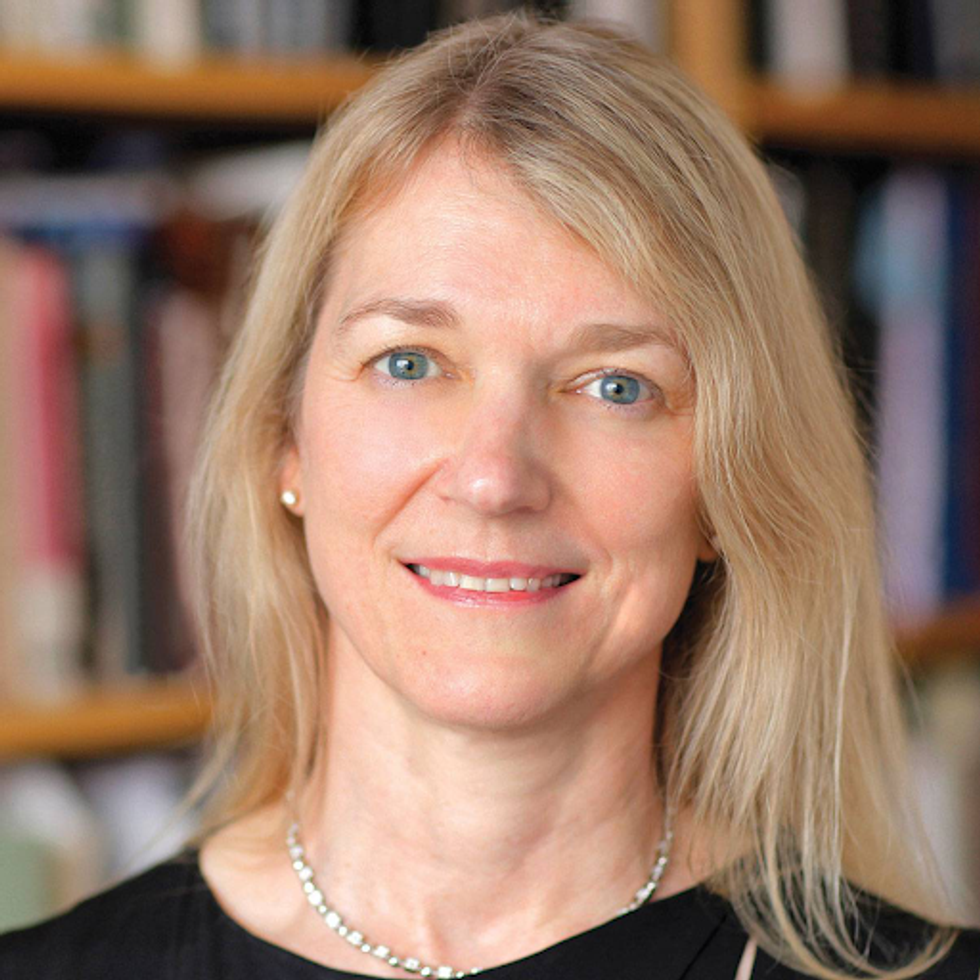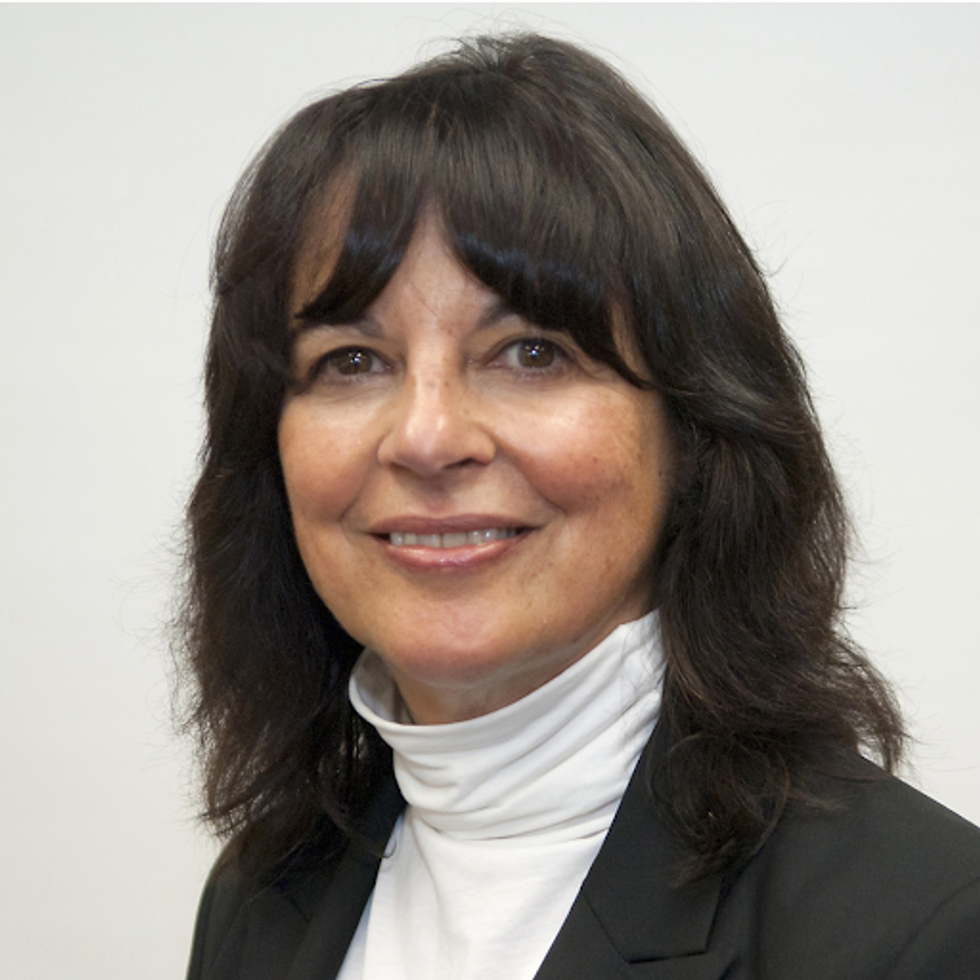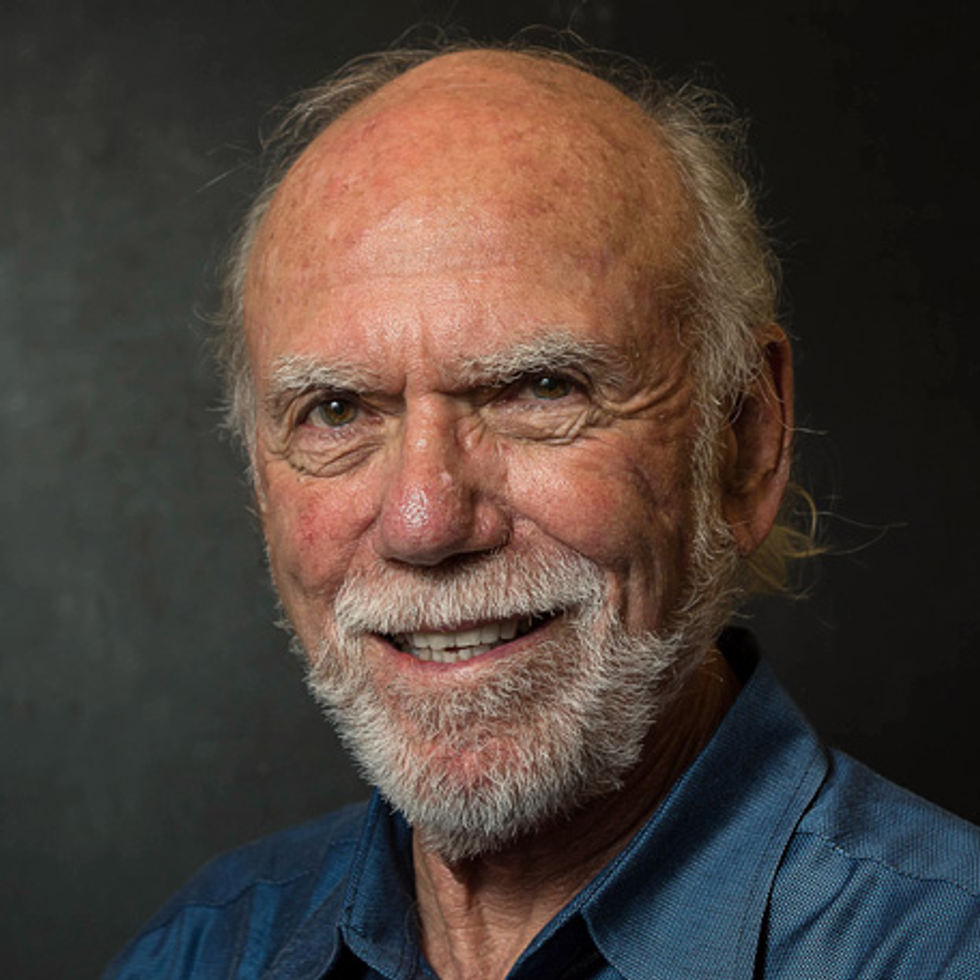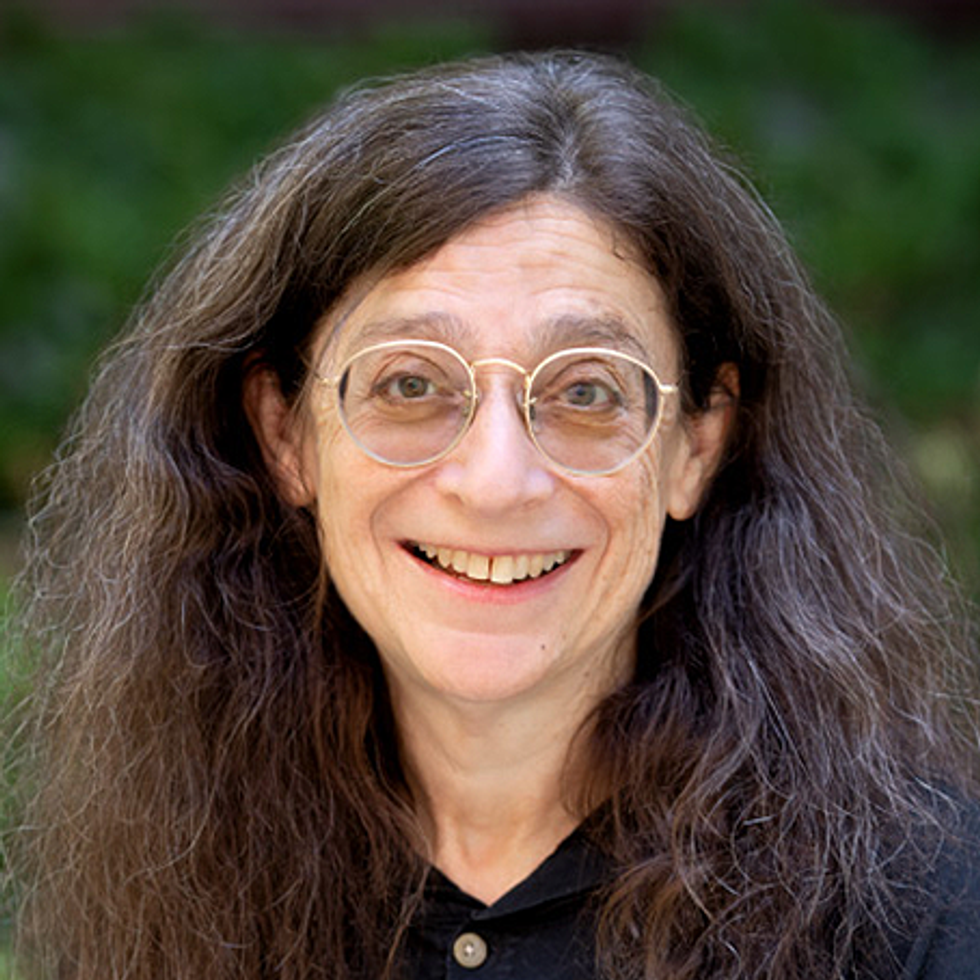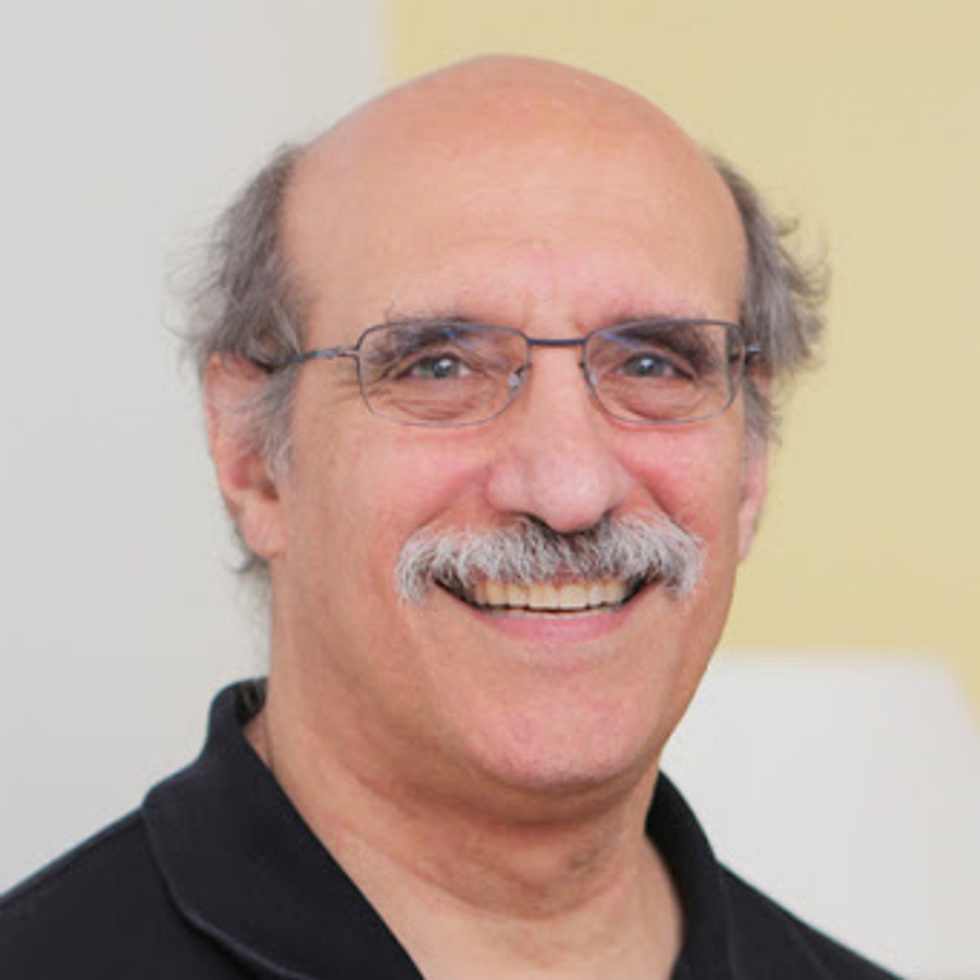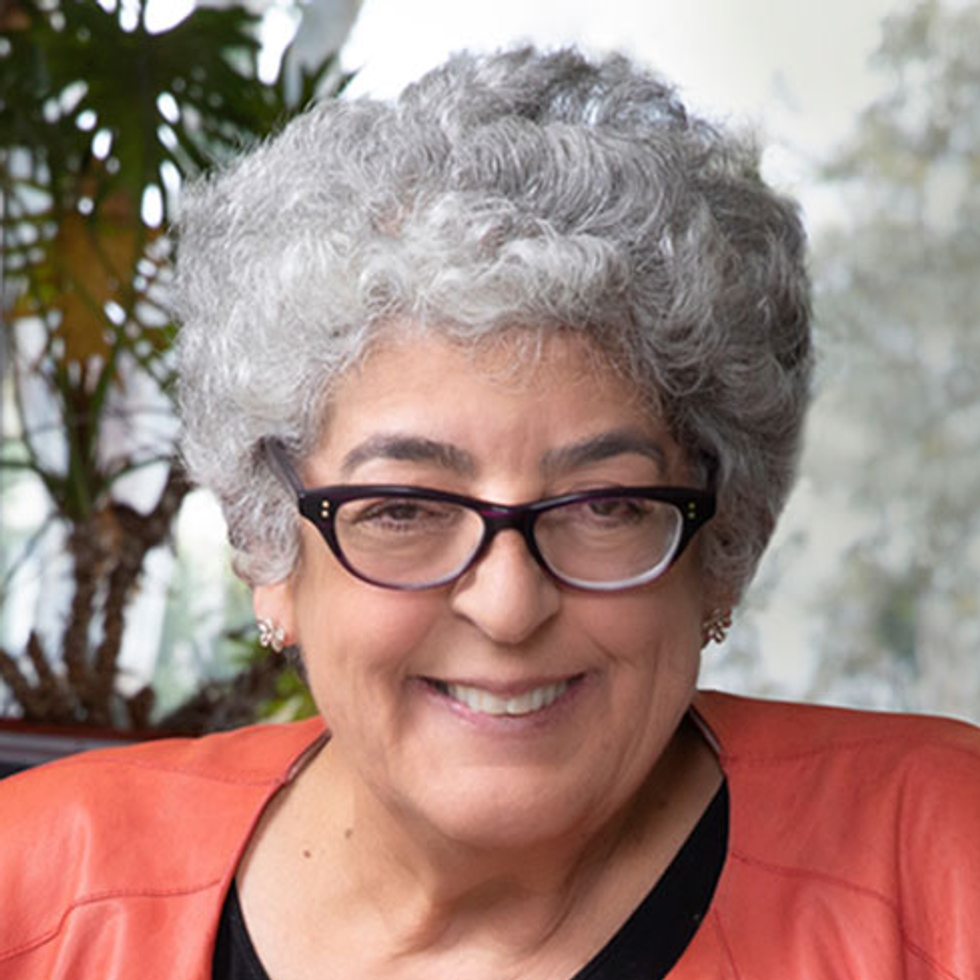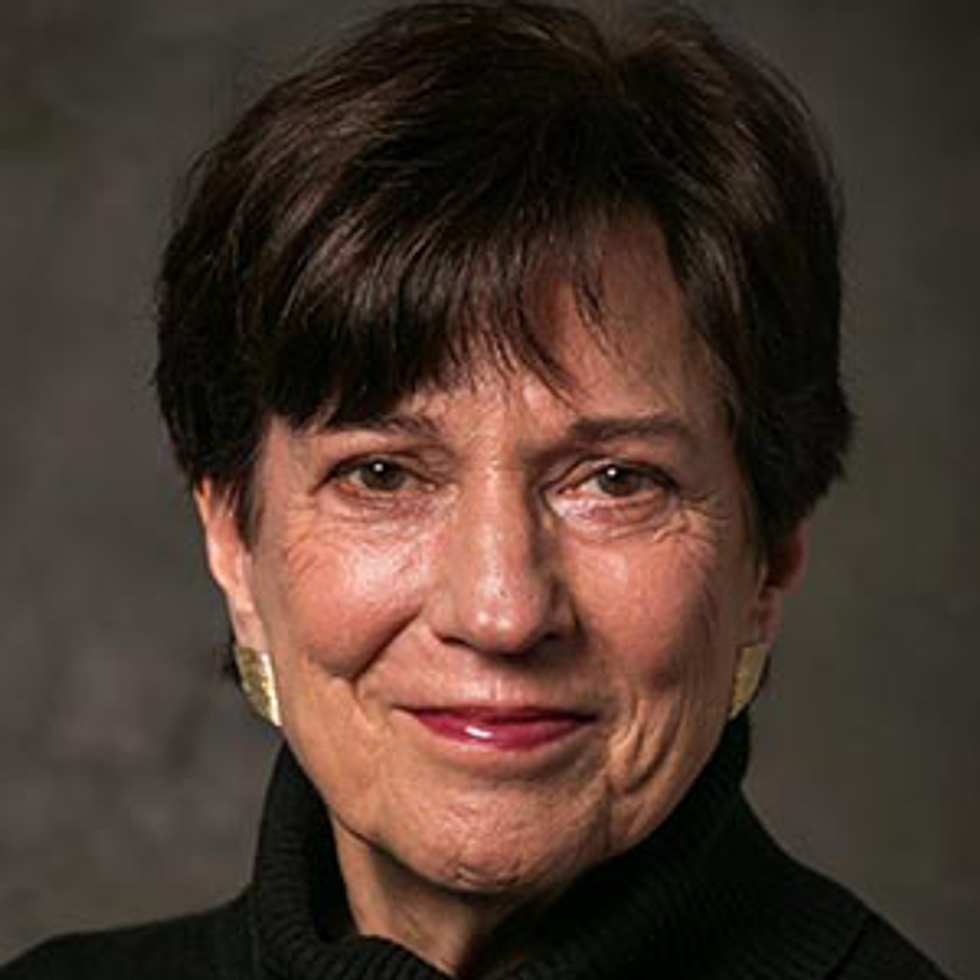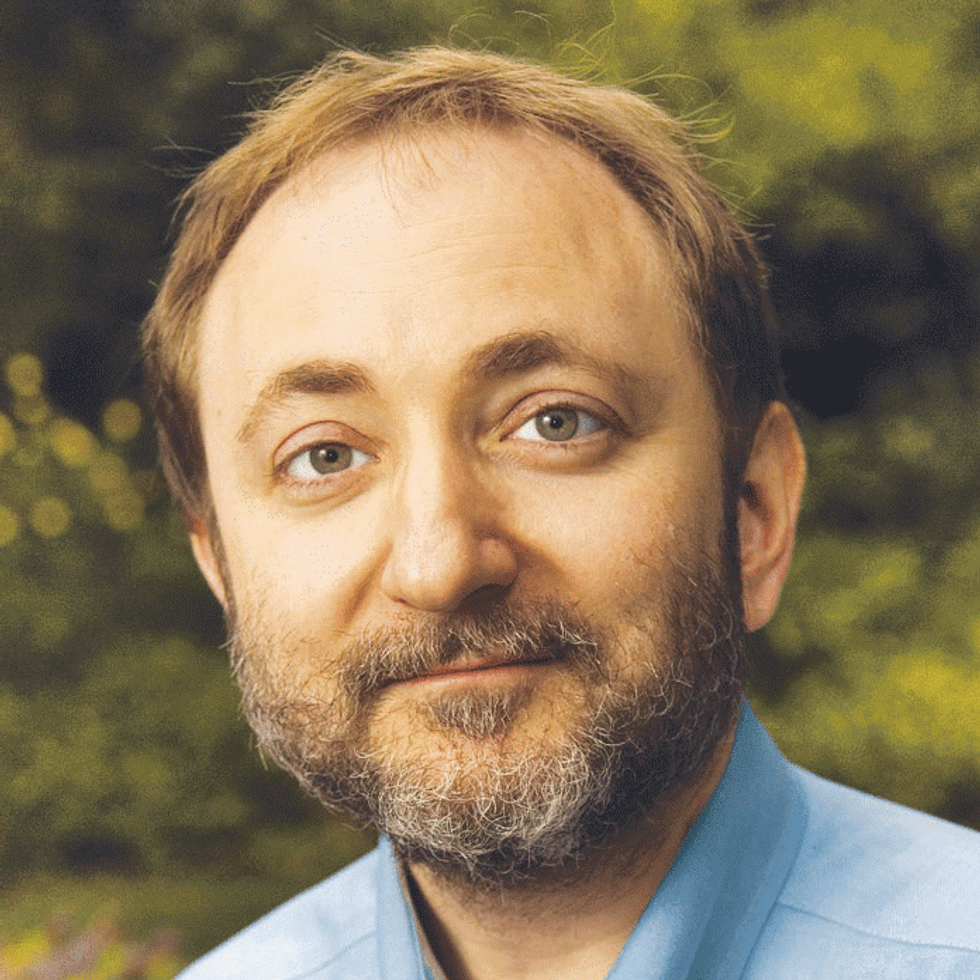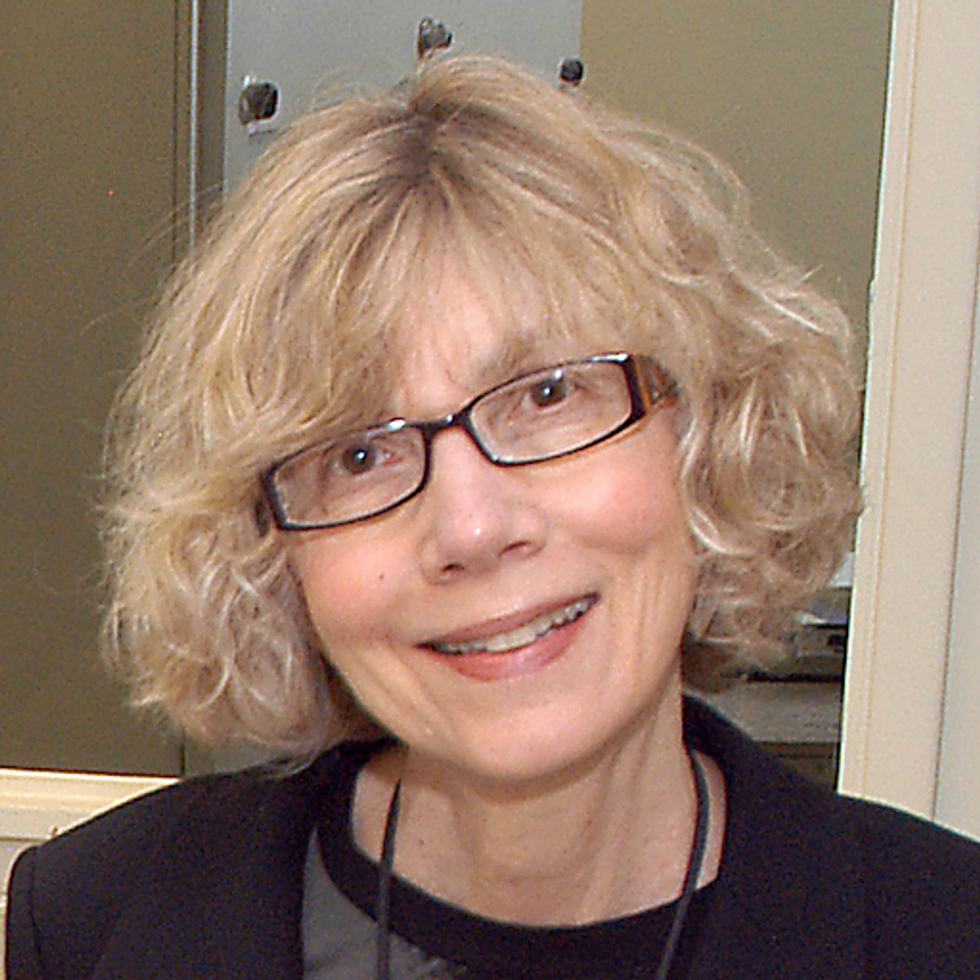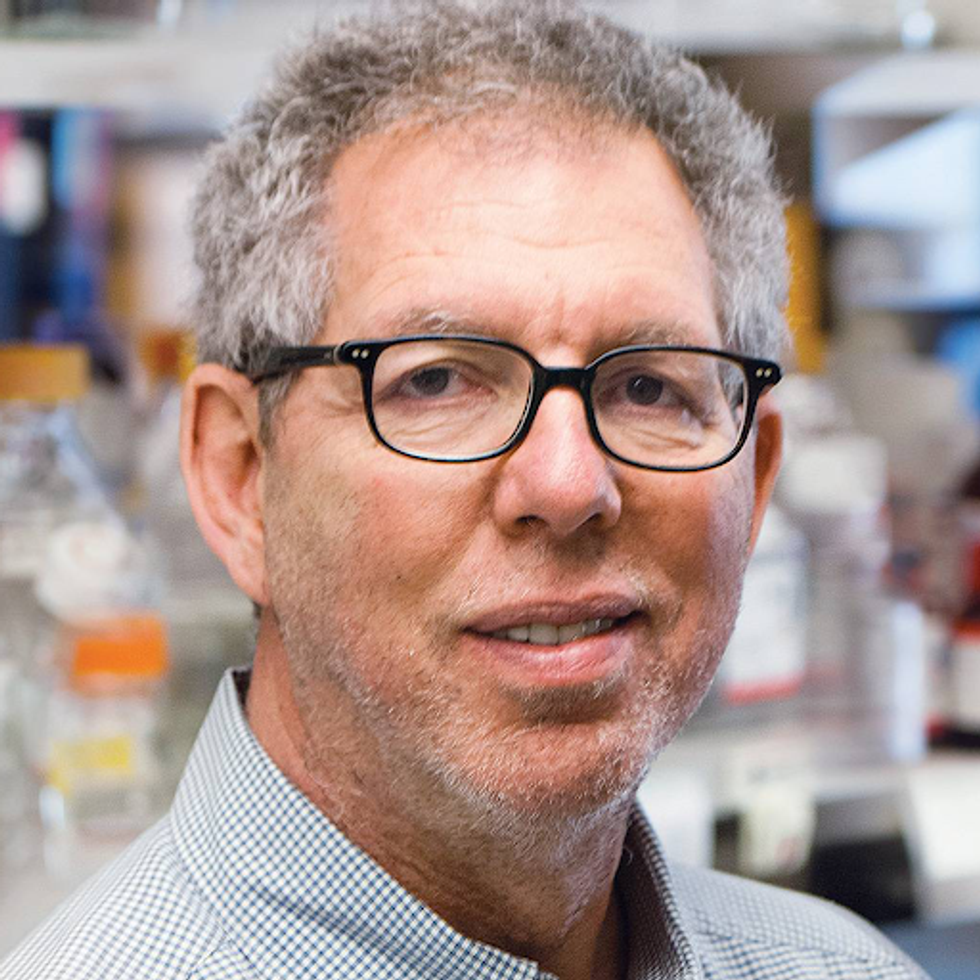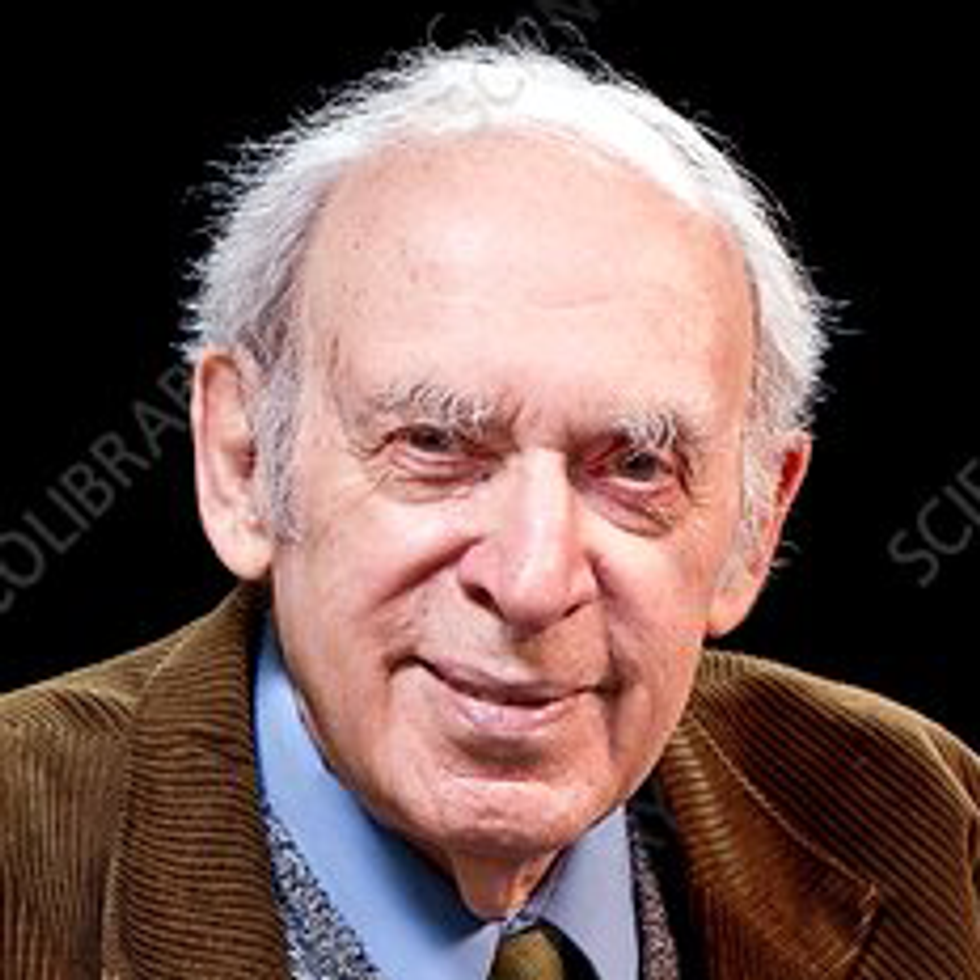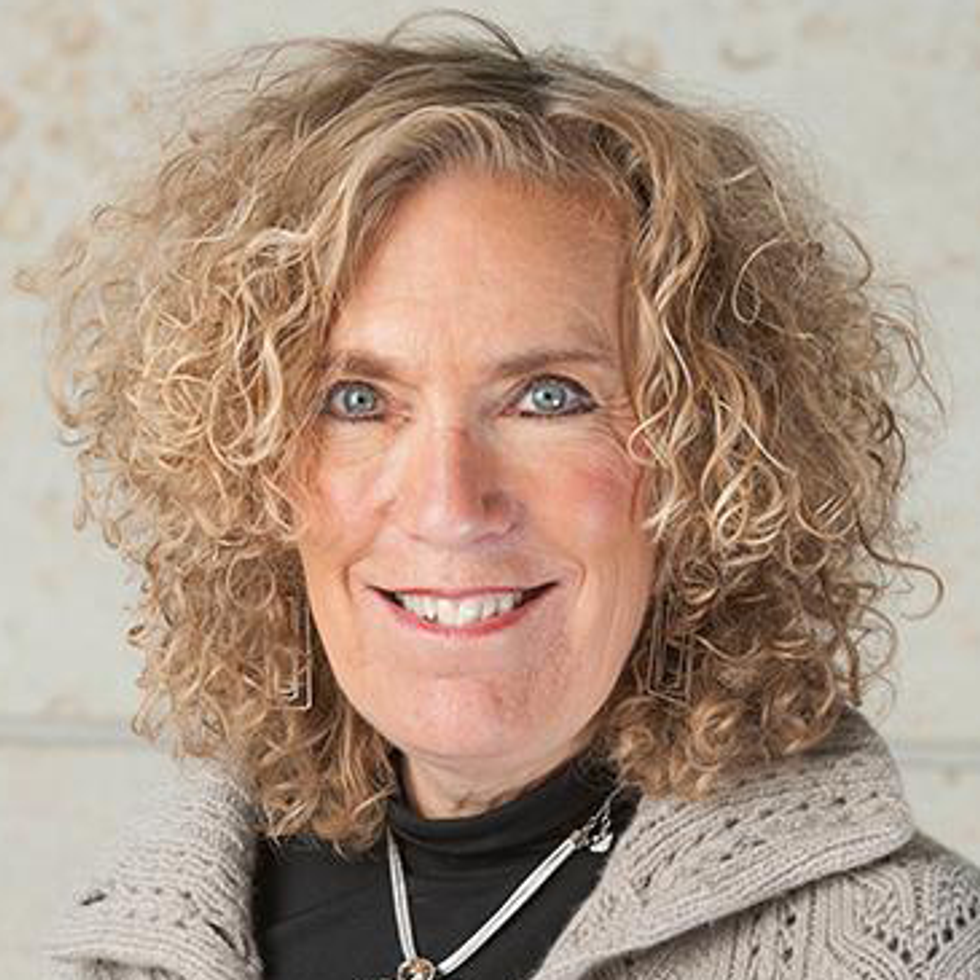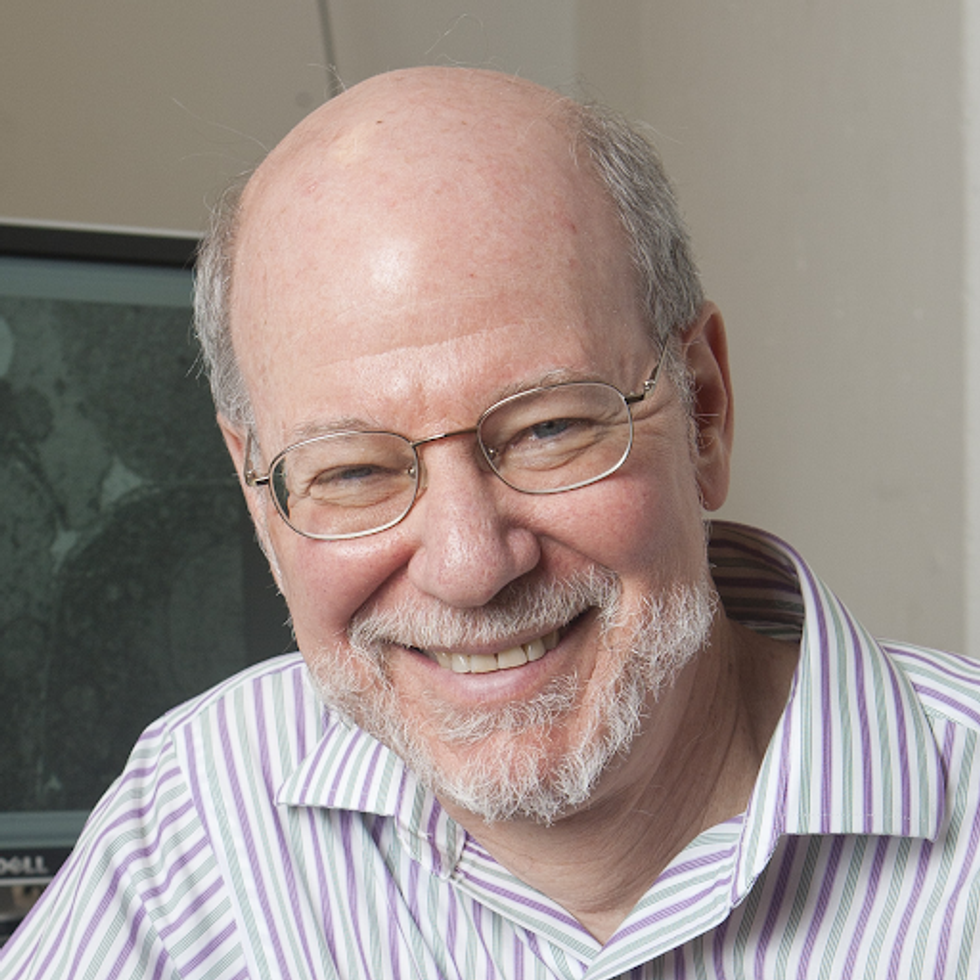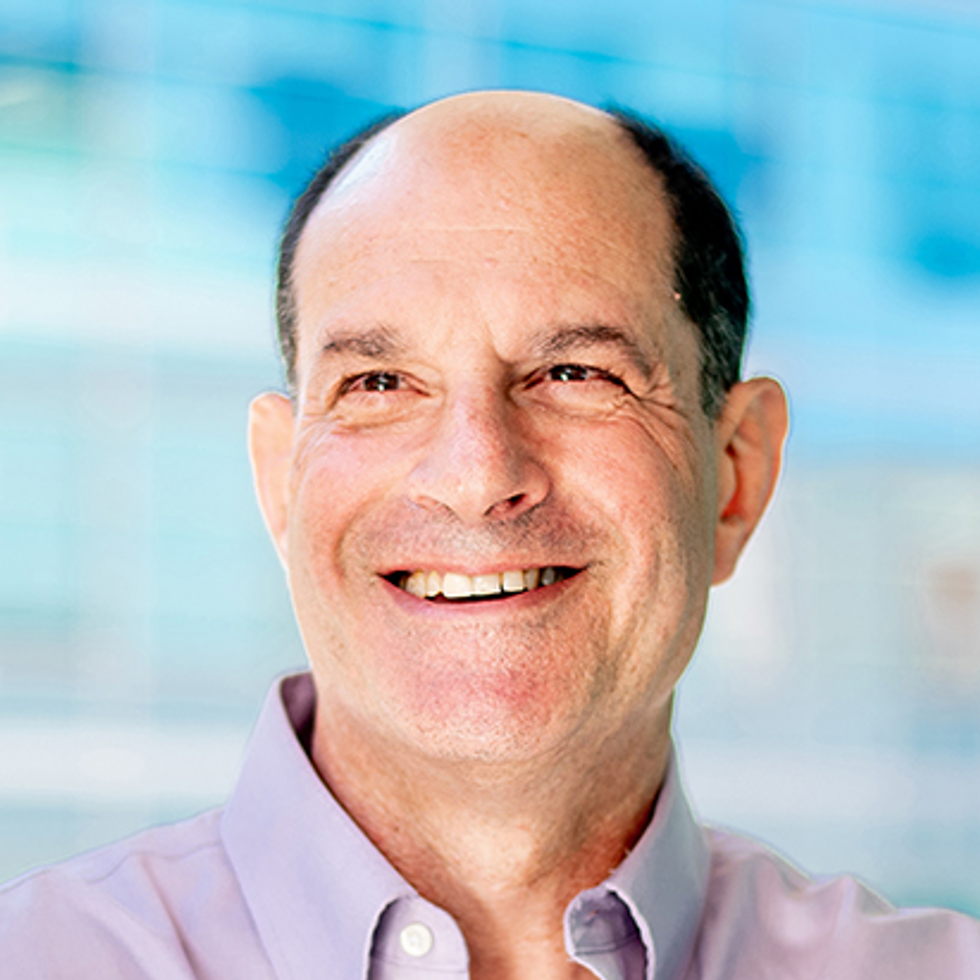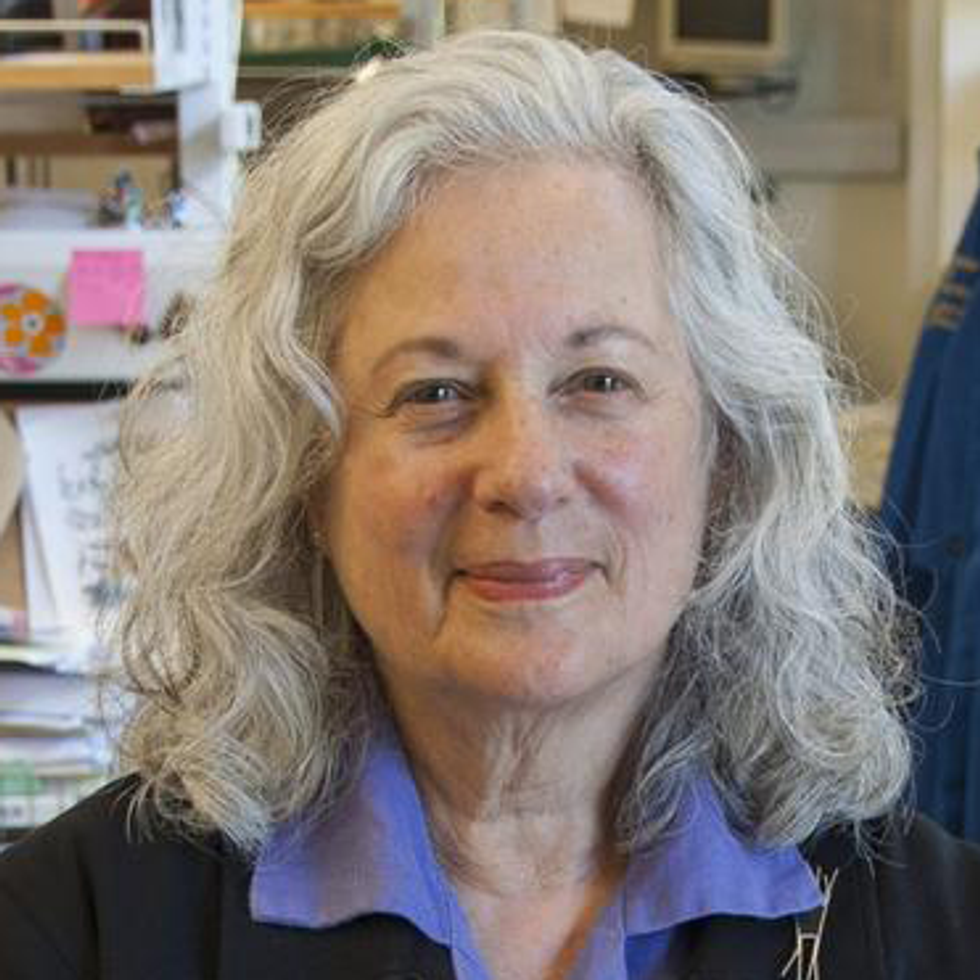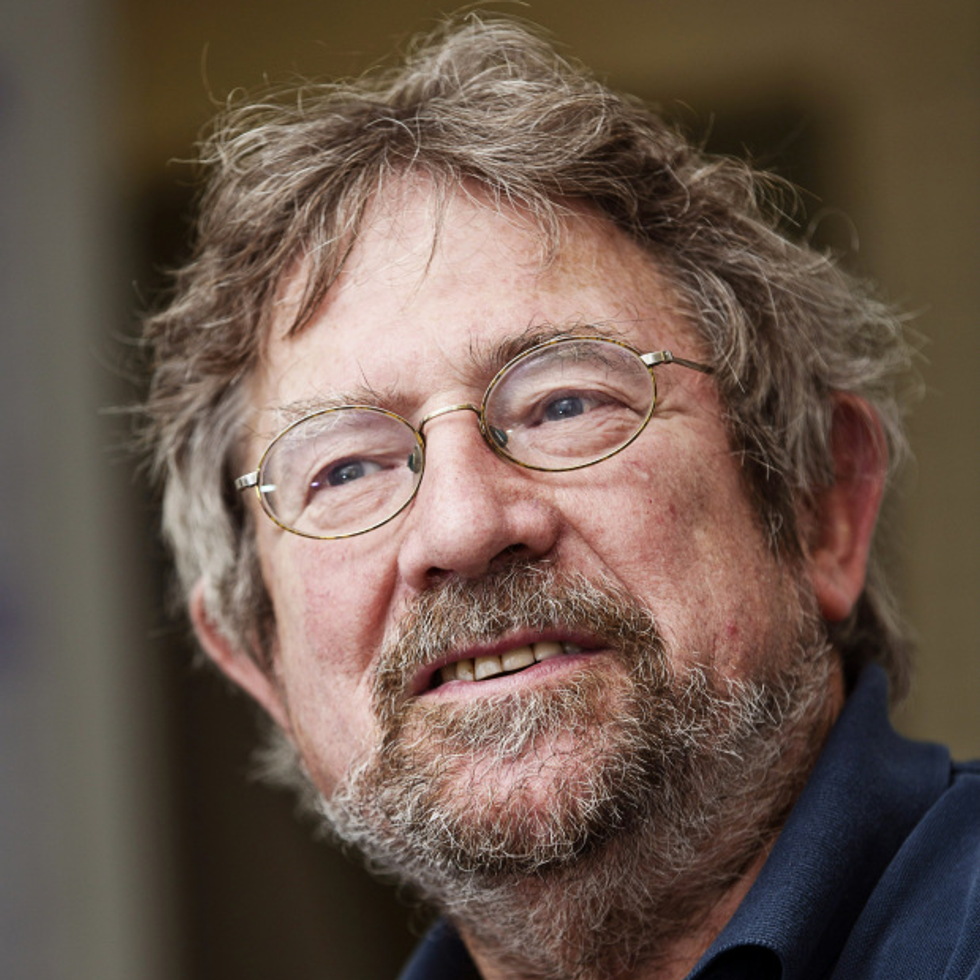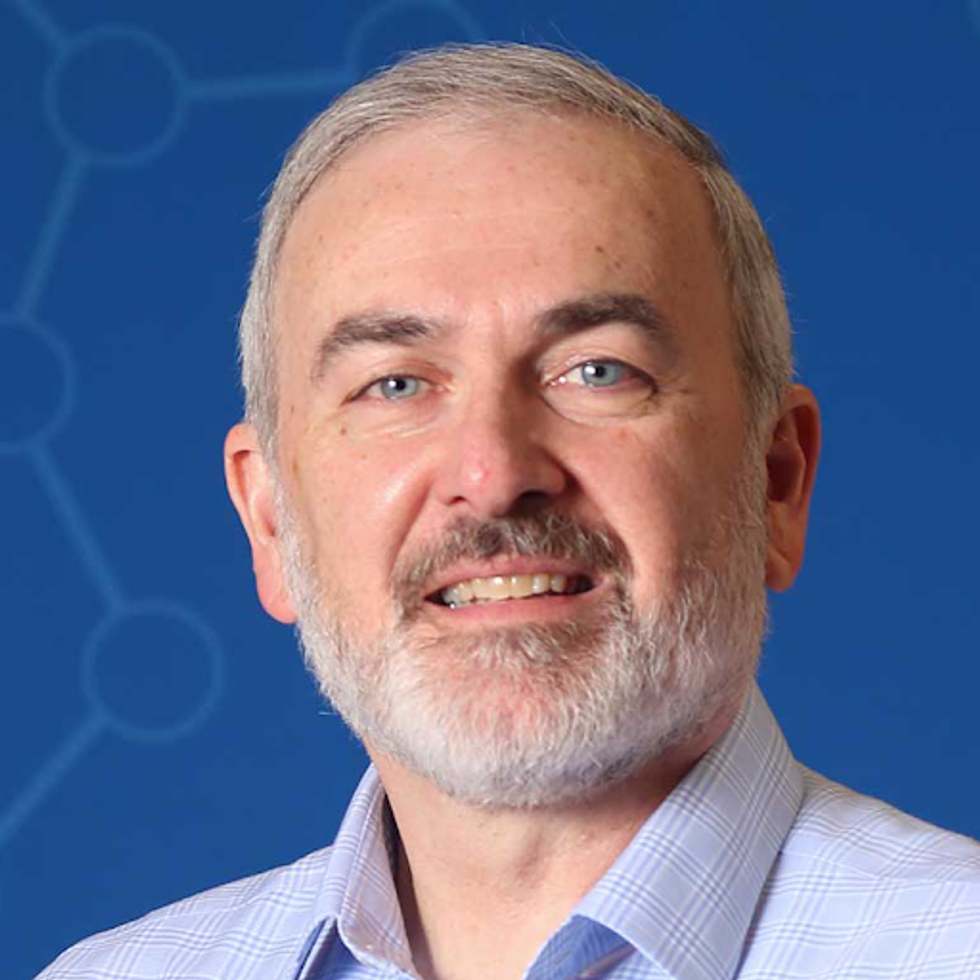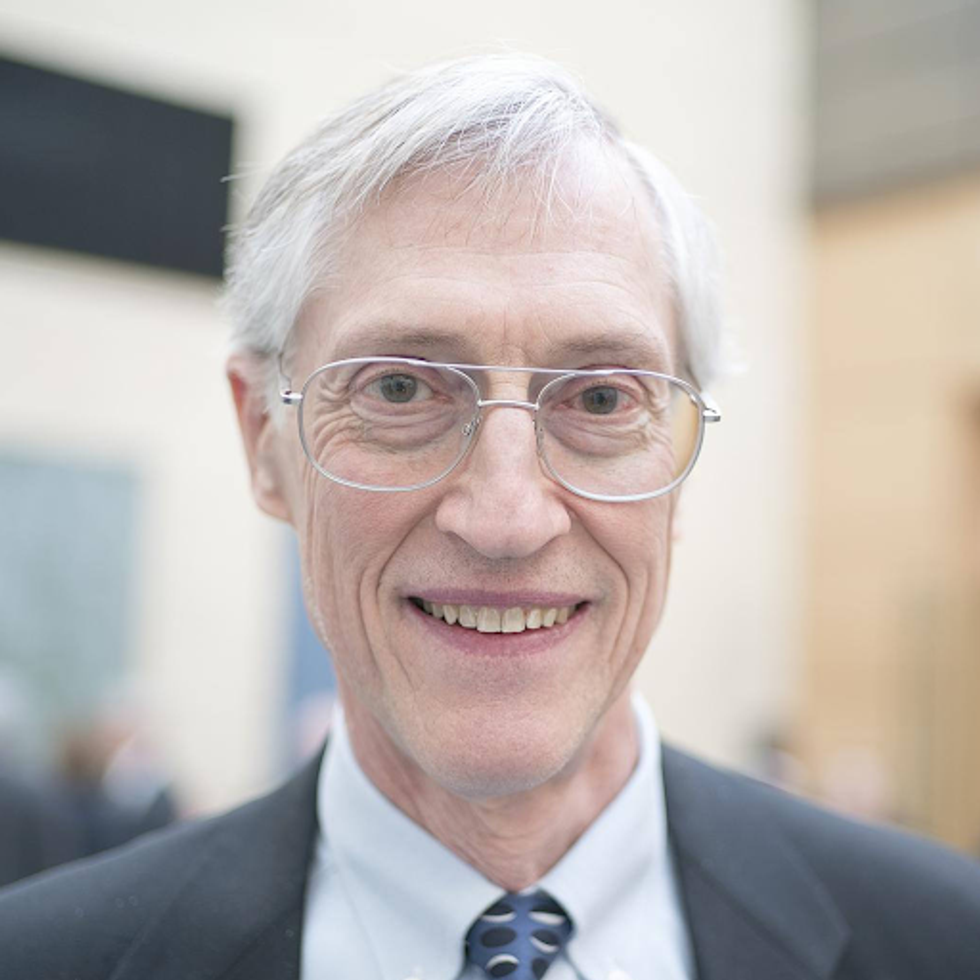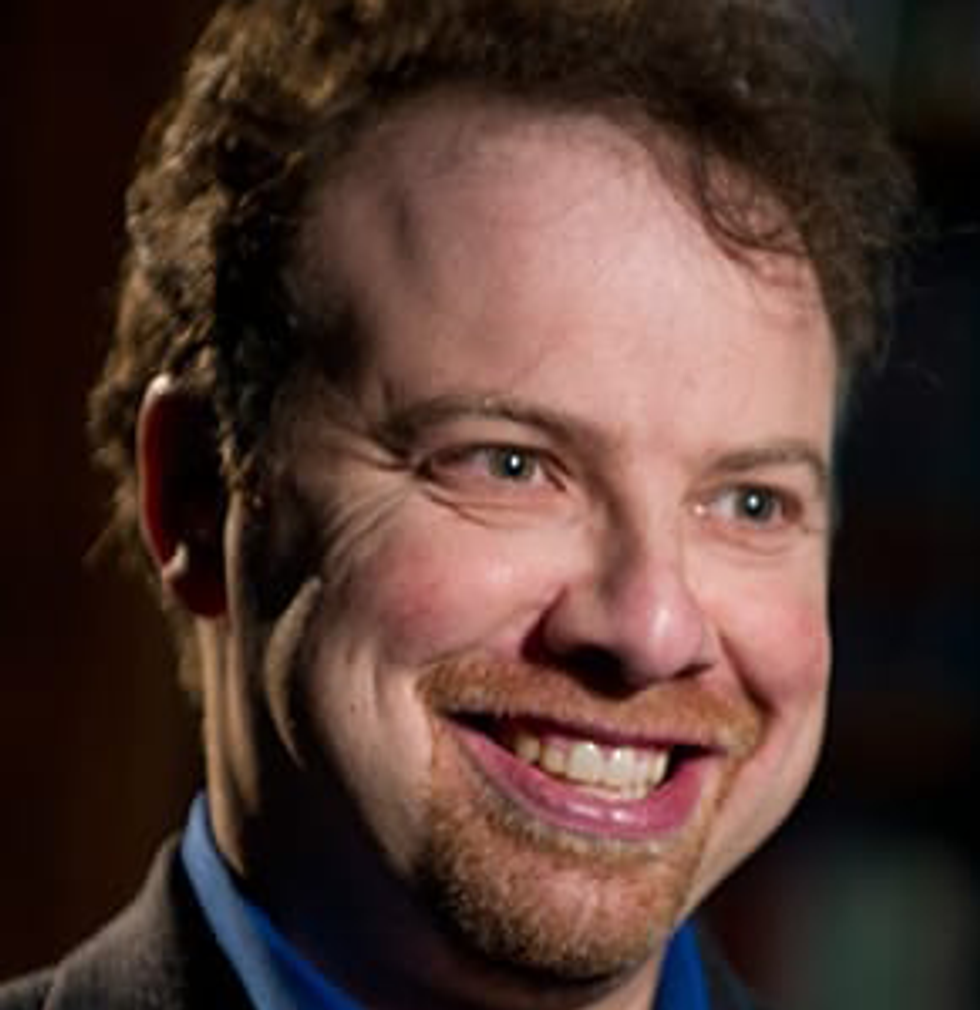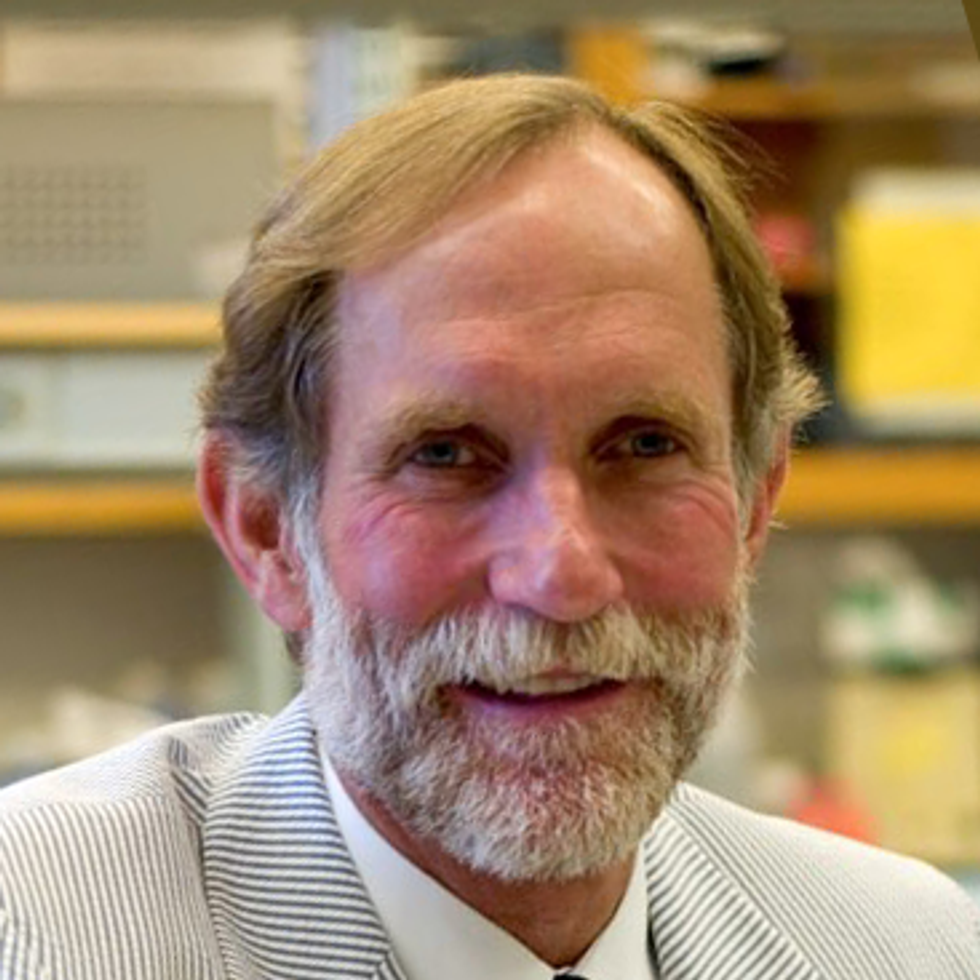Why Are Autism Rates Steadily Rising?

Stefania Sterling with her son Charlie, who was diagnosed at age 3 with autism.
Stefania Sterling was just 21 when she had her son, Charlie. She was young and healthy, with no genetic issues apparent in either her or her husband's family, so she expected Charlie to be typical.
"It is surprising that the prevalence of a significant disorder like autism has risen so consistently over a relatively brief period."
It wasn't until she went to a Mommy and Me music class when he was one, and she saw all the other one-year-olds walking, that she realized how different her son was. He could barely crawl, didn't speak, and made no eye contact. By the time he was three, he was diagnosed as being on the lower functioning end of the autism spectrum.
She isn't sure why it happened – and researchers, too, are still trying to understand the basis of the complex condition. Studies suggest that genes can act together with influences from the environment to affect development in ways that lead to Autism Spectrum Disorder (ASD). But rates of ASD are rising dramatically, making the need to figure out why it's happening all the more urgent.
The Latest News
Indeed, the CDC's latest autism report, released last week, which uses 2016 data, found that the prevalence of ASD in four-year-old children was one in 64 children, or 15.6 affected children per 1,000. That's more than the 14.1 rate they found in 2014, for the 11 states included in the study. New Jersey, as in years past, was the highest, with 25.3 per 1,000, compared to Missouri, which had just 8.8 per 1,000.
The rate for eight-year-olds had risen as well. Researchers found the ASD prevalence nationwide was 18.5 per 1,000, or one in 54, about 10 percent higher than the 16.8 rate found in 2014. New Jersey, again, was the highest, at one in 32 kids, compared to Colorado, which had the lowest rate, at one in 76 kids. For New Jersey, that's a 175 percent rise from the baseline number taken in 2000, when the state had just one in 101 kids.
"It is surprising that the prevalence of a significant disorder like autism has risen so consistently over a relatively brief period," said Walter Zahorodny, an associate professor of pediatrics at Rutgers New Jersey Medical School, who was involved in collecting the data.
The study echoed the findings of a surprising 2011 study in South Korea that found 1 in every 38 students had ASD. That was the the first comprehensive study of autism prevalence using a total population sample: A team of investigators from the U.S., South Korea, and Canada looked at 55,000 children ages 7 to 12 living in a community in South Korea and found that 2.64 percent of them had some level of autism.
Searching for Answers
Scientists can't put their finger on why rates are rising. Some say it's better diagnosis. That is, it's not that more people have autism. It's that we're better at detecting it. Others attribute it to changes in the diagnostic criteria. Specifically, the May 2013 update of the Diagnostic and Statistical Manual of Mental Disorders-5 -- the standard classification of mental disorders -- removed the communication deficit from the autism definition, which made more children fall under that category. Cynical observers believe physicians and therapists are handing out the diagnosis more freely to allow access to services available only to children with autism, but that are also effective for other children.
Alycia Halladay, chief science officer for the Autism Science Foundation in New York, said she wishes there were just one answer, but there's not. While she believes the rising ASD numbers are due in part to factors like better diagnosis and a change in the definition, she does not believe that accounts for the entire rise in prevalence. As for the high numbers in New Jersey, she said the state has always had a higher prevalence of autism compared to other states. It is also one of the few states that does a good job at recording cases of autism in its educational records, meaning that children in New Jersey are more likely to be counted compared to kids in other states.
"Not every state is as good as New Jersey," she said. "That accounts for some of the difference compared to elsewhere, but we don't know if it's all of the difference in prevalence, or most of it, or what."
"What we do know is that vaccinations do not cause autism."
There is simply no defined proven reason for these increases, said Scott Badesch, outgoing president and CEO of the Autism Society of America.
"There are suggestions that it is based on better diagnosis, but there are also suggestions that the incidence of autism is in fact increasing due to reasons that have yet been determined," he said, adding, "What we do know is that vaccinations do not cause autism."
Zahorodny, the pediatrics professor, believes something is going on beyond better detection or evolving definitions.
"Changes in awareness and shifts in how children are identified or diagnosed are relevant, but they only take you so far in accounting for an increase of this magnitude," he said. "We don't know what is driving the surge in autism recorded by the ADDM Network and others."
He suggested that the increase in prevalence could be due to non-genetic environmental triggers or risk factors we do not yet know about, citing possibilities including parental age, prematurity, low birth rate, multiplicity, breech presentation, or C-section delivery. It may not be one, but rather several factors combined, he said.
"Increases in ASD prevalence have affected the whole population, so the triggers or risks must be very widely dispersed across all strata," he added.
There are studies that find new risk factors for ASD almost on a daily basis, said Idan Menashe, assistant professor in the Department of Health at Ben-Gurion University of the Negev, the fastest growing research university in Israel.
"There are plenty of studies that find new genetic variants (and new genes)," he said. In addition, various prenatal and perinatal risk factors are associated with a risk of ASD. He cited a study his university conducted last year on the relationship between C-section births and ASD, which found that exposure to general anesthesia may explain the association.
Whatever the cause, health practitioners are seeing the consequences in real time.
"People say rates are higher because of the changes in the diagnostic criteria," said Dr. Roseann Capanna-Hodge, a psychologist in Ridgefield, CT. "And they say it's easier for children to get identified. I say that's not the truth and that I've been doing this for 30 years, and that even 10 years ago, I did not see the level of autism that I do see today."
Sure, we're better at detecting autism, she added, but the detection improvements have largely occurred at the low- to mid- level part of the spectrum. The higher rates of autism are occurring at the more severe end, in her experience.
A Polarizing Theory
Among the more controversial risk factors scientists are exploring is the role environmental toxins may play in the development of autism. Some scientists, doctors and mental health experts suspect that toxins like heavy metals, pesticides, chemicals, or pollution may interrupt the way genes are expressed or the way endocrine systems function, manifesting in symptoms of autism. But others firmly resist such claims, at least until more evidence comes forth. To date, studies have been mixed and many have been more associative than causative.
"Today, scientists are still trying to figure out whether there are other environmental changes that can explain this rise, but studies of this question didn't provide any conclusive answer," said Menashe, who also serves as the scientific director of the National Autism Research Center at BGU.
"It's not everything that makes Charlie. He's just like any other kid."
That inconclusiveness has not dissuaded some doctors from taking the perspective that toxins do play a role. "Autism rates are rising because there is a mismatch between our genes and our environment," said Julia Getzelman, a pediatrician in San Francisco. "The majority of our evolution didn't include the kinds of toxic hits we are experiencing. The planet has changed drastically in just the last 75 years –- it has become more and more polluted with tens of thousands of unregulated chemicals being used by industry that are having effects on our most vulnerable."
She cites BPA, an industrial chemical that has been used since the 1960s to make certain plastics and resins. A large body of research, she says, has shown its impact on human health and the endocrine system. BPA binds to our own hormone receptors, so it may negatively impact the thyroid and brain. A study in 2015 was the first to identify a link between BPA and some children with autism, but the relationship was associative, not causative. Meanwhile, the Food and Drug Administration maintains that BPA is safe at the current levels occurring in food, based on its ongoing review of the available scientific evidence.
Michael Mooney, President of St. Louis-based Delta Genesis, a non-profit organization that treats children struggling with neurodevelopmental delays like autism, suspects a strong role for epigenetics, which refers to changes in how genes are expressed as a result of environmental influences, lifestyle behaviors, age, or disease states.
He believes some children are genetically predisposed to the disorder, and some unknown influence or combination of influences pushes them over the edge, triggering epigenetic changes that result in symptoms of autism.
For Stefania Sterling, it doesn't really matter how or why she had an autistic child. That's only one part of Charlie.
"It's not everything that makes Charlie," she said. "He's just like any other kid. He comes with happy moments. He comes with sad moments. Just like my other three kids."
New Hope for Organ Transplantation: Life Without Anti-Rejection Drugs
Kidney transplant patient Robert Waddell, center, with his wife and children after being off immunosuppresants; photo aken last summer in Perdido Key, FL. Left to right: Christian, Bailey, Rob, Karen (wife), Robby and Casey.
Rob Waddell dreaded getting a kidney transplant. He suffers from a genetic condition called polycystic kidney disease that causes the uncontrolled growth of cysts that gradually choke off kidney function. The inherited defect has haunted his family for generations, killing his great grandmother, grandmother, and numerous cousins, aunts and uncles.
But he saw how difficult it was for his mother and sister, who also suffer from this condition, to live with the side effects of the drugs they needed to take to prevent organ rejection, which can cause diabetes, high blood pressure and cancer, and even kidney failure because of their toxicity. Many of his relatives followed the same course, says Waddell: "They were all on dialysis, then a transplant and ended up usually dying from cancers caused by the medications."
When the Louisville native and father of four hit 40, his kidneys barely functioned and the only alternative was either a transplant or the slow death of dialysis. But in 2009, when Waddell heard about an experimental procedure that could eliminate the need for taking antirejection drugs, he jumped at the chance to be their first patient. Devised by scientists at the University of Louisville and Northwestern University, the innovative approach entails mixing stem cells from the live kidney donor with that of the recipient to create a hybrid immune system, known as a chimera, that would trick the immune system and prevent it from attacking the implanted kidney.
The procedure itself was done at Northwestern Memorial Hospital in Chicago, using a live kidney donated by a neighbor of Waddell's, who camped out in Chicago during his recovery. Prior to surgery, Waddell underwent a conditioning treatment that consisted of low dose radiation and chemotherapy to weaken his own immune system and make room for the infusion of stem cells.
"The low intensity chemo and radiation conditioning regimen create just enough space for the donor stem cells to gain a foothold in the bone marrow and the donor's immune system takes over," says Dr. Joseph Levanthal, the transplant surgeon who performed the operation and director of kidney and pancreas transplantation at Northwestern University Feinberg School of Medicine. "That way the recipient develops an immune system that doesn't see the donor organ as foreign."
"As a surgeon, I saw what my patients had to go through—taking 25 pills a day, dying at an early age from heart disease, or having a 35% chance of dying every year on dialysis."
A week later, Waddell had the kidney transplant. The following day, he was infused with a complex cellular cocktail that included blood-forming stem cells derived from his donor's bone marrow mixed what are called tolerance inducing facilitator cells (FCs); these cells help the foreign stem cells get established in the recipient's bone marrow.
Over the course of the following year, he was slowly weaned off of antirejection medications—a precaution in case the procedure didn't work—and remarkably, hasn't needed them since. "I felt better than I had in decades because my kidneys [had been] degrading," recalls Waddell, now 54 and a CPA for a global beverage company. And what's even better is that this new approach offers hope for one of his sons who has also inherited the disorder.
Kidney transplants are the most frequent organ transplants in the world and more than 23,000 of these procedures were done in the United States in 2019, according to the United Network for Organ Sharing. Of this, about 7,000 operations are done annually using live organ donors; the remainder use organs from people who are deceased. Right now, this revolutionary new approach—as well as a similar strategy formulated by Stanford University scientists--is in the final phase of clinical trials. Ultimately, this research may pave the way towards realizing the holy grail of organ transplantation: preventing organ rejection by creating a tolerant state in which the recipient's immune system is compatible with the donor, which would eliminate the need for a lifetime of medications.
"As a surgeon, I saw what my patients had to go through—taking 25 pills a day, dying at an early age from heart disease, or having a 35% chance of dying every year on dialysis," says Dr. Suzanne Ildstad, a transplant surgeon and director of the Institute for Cellular Therapeutics at the University of Louisville, whose discovery of facilitator cells were the basis for this therapeutic platform. Ildstad, who has spent more than two decades searching for a better way, says, "This is something I have worked for my entire life."
The Louisville group uses a combination of chemo and radiation to replace the recipient's immune and blood forming cells with that of the donor. In contrast, the Stanford protocol involves harvesting the donor's blood stem cells and T-cells, which are the foot soldiers of the immune system that fight off infections and would normally orchestrate the rejection of the transplanted organ. Their transplant recipients undergo a milder form of "conditioning" that only radiates discrete parts of the body and selectively targets the recipient's T-cells, creating room for both sets of T-cells, a strategy these researchers believe has a better safety profile and less of a chance of rejection.
"We try to achieve immune tolerance by a true chimerism," says Dr. Samuel Strober, a professor of medicine for immunology and rheumatology at Stanford University and a leader of this research team. "The recipients immune system cells are maintained but mixed in the blood with that of the donor."
Studies suggest both approaches work. In a 2018 clinical trial conducted by Talaris Therapeutics, a Louisville-based biotech founded by Ildstad, 26 of 37 (70%) of the live donor kidney transplant recipients no longer need immunosuppressants. Last fall, Talaris began the final phase of clinical tests that will eventually encompass more than 120 such patients.
The Stanford group's cell-based immunotherapy, which is called MDR-101 and is sponsored by the South San Francisco biotech, Medeor Therapeutics, has had similar results in patients who received organs from live donors who were either well matched, such as one from siblings, meaning they were immunologically identical, or partially matched; Talaris uses unrelated donors where there is only a partial match.
In their 2020 clinical trial of 51 patients, 29 were fully matched and 22 were a partial match; 22 of the fully matched recipients didn't need antirejection drugs and ten of the partial matches were able to stop taking some of these medications without rejection. "With our fully matched, roughly 80% have been completely off drugs up to 14 years later," says Strober, "and reducing the number of drugs from three to one [in the partial matches] means you have far fewer side effects. The goal is to get them off of all drugs."
But these protocols are limited to a small number of patients—living donor kidney recipients. As a consequence, both teams are experimenting with ways to broaden their approach so they can use cadaver organs from deceased donors, with human tests planned in the coming year. Here's how that would work: after the other organs are removed from a deceased donor, stem cells are harvested from the donor's vertebrae in the spinal column and then frozen for storage.
"We do the transplant and give the patient a chance to recover and maintain them on drugs," says Ildstad. "Then we do the tolerance conditioning at a later stage."
If this strategy is successful, it would be a genuine game changer, and open the door to using these protocols for transplanting other cadaver organs, including the heart, lungs and liver. While the overall procedure is complex and costly, in the long run it's less expensive than repeated transplant surgeries, the cost of medications and hospitalizations for complications caused by the drugs, or thrice weekly dialysis treatments, says Ildstad.
And she adds, you can't put a price tag on the vast improvement in quality of life.
Award-Winning Scientists Offer Advice to President Biden
The White House in Washington, D.C.
This article is part of the magazine, "The Future of Science In America: The Election Issue," co-published by LeapsMag, the Aspen Institute Science & Society Program, and GOOD.
We invited Nobel Prize, National Medal of Science, and Breakthrough Prize Laureates working in America to offer advice to the next President on how to prioritize science and medicine in the next four years. Almost universally, these 28 letters underscore the importance of government support for basic or fundamental research to fuel long-term solutions to challenges like infectious diseases, climate change, and environmental preservation.
Many of these scientists are immigrants to the United States and emphasize how they moved to this country for its educational and scientific opportunities, which recently have been threatened by changes in visa policies for students and researchers from overseas. Many respondents emphasize the importance of training opportunities for scientists from diverse backgrounds to ensure that America can continue to have one of the strongest, most creative scientific workforces in the world.
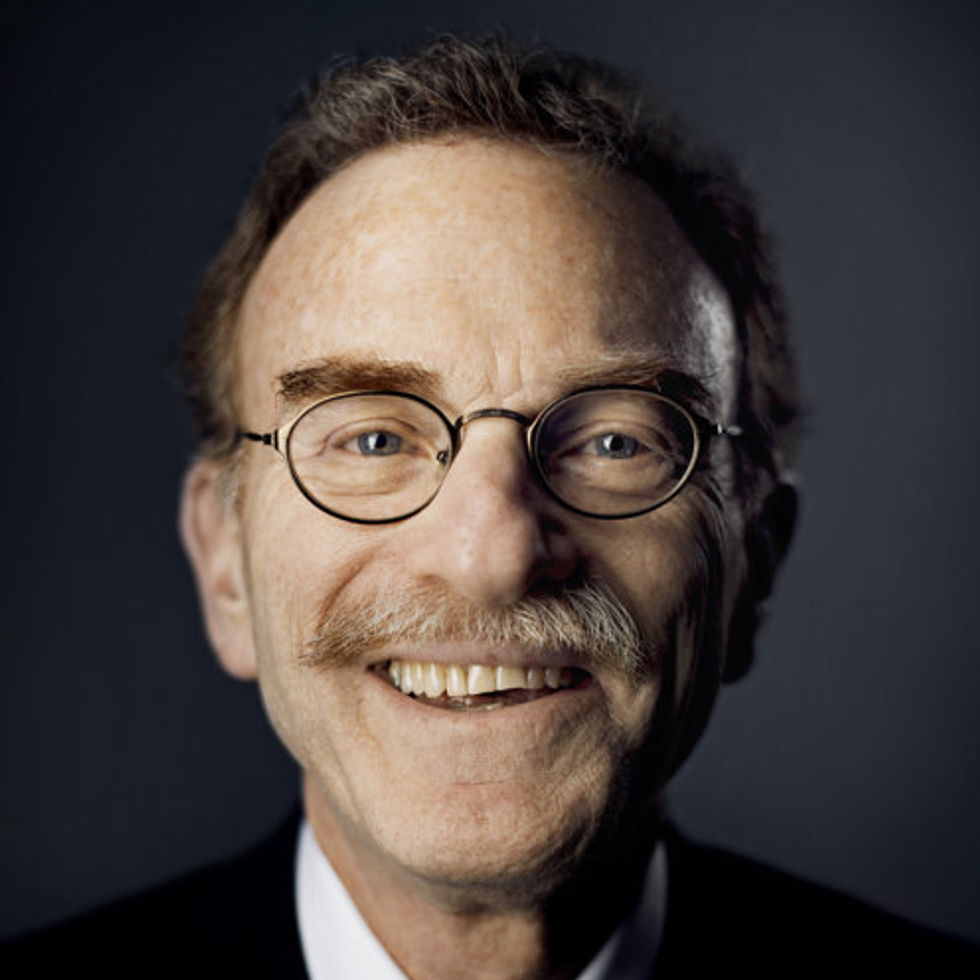
Randy W. Schekman, Ph.D.
2013 Nobel Laureate in Physiology or Medicine

George F. Smoot, Ph.D.
2006 Nobel Laureate in Physics
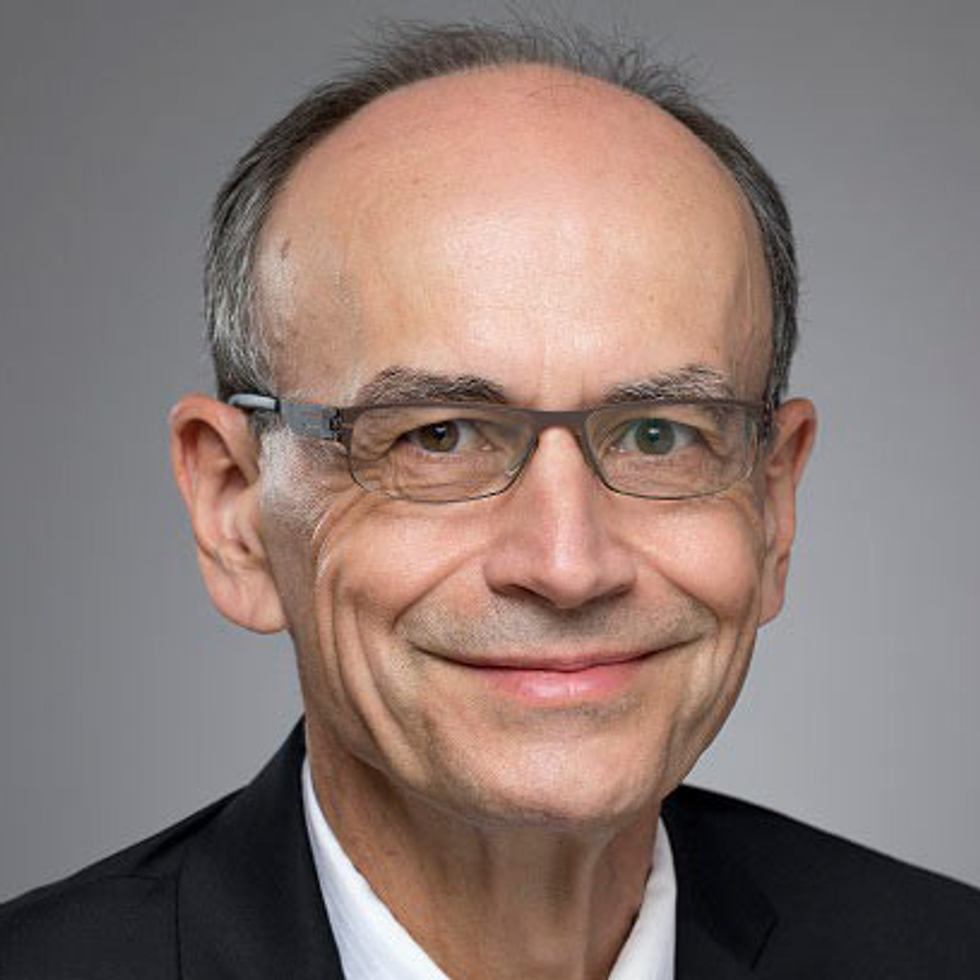
Thomas C. Südhof, M.D.
2013 Nobel Laureate for Physiology or Medicine

Warren M. Washington, Ph.D.
2009 National Medal of Science Laureate

Carl Wieman, Ph.D.
2001 Nobel Laureate in Physics
Dear Mr. President:
- Bloomberg Distinguished Professor and Director
- Johns Hopkins Malaria Research Institute
- 2003 Nobel Laureate in Chemistry
David Baker, Ph.D.
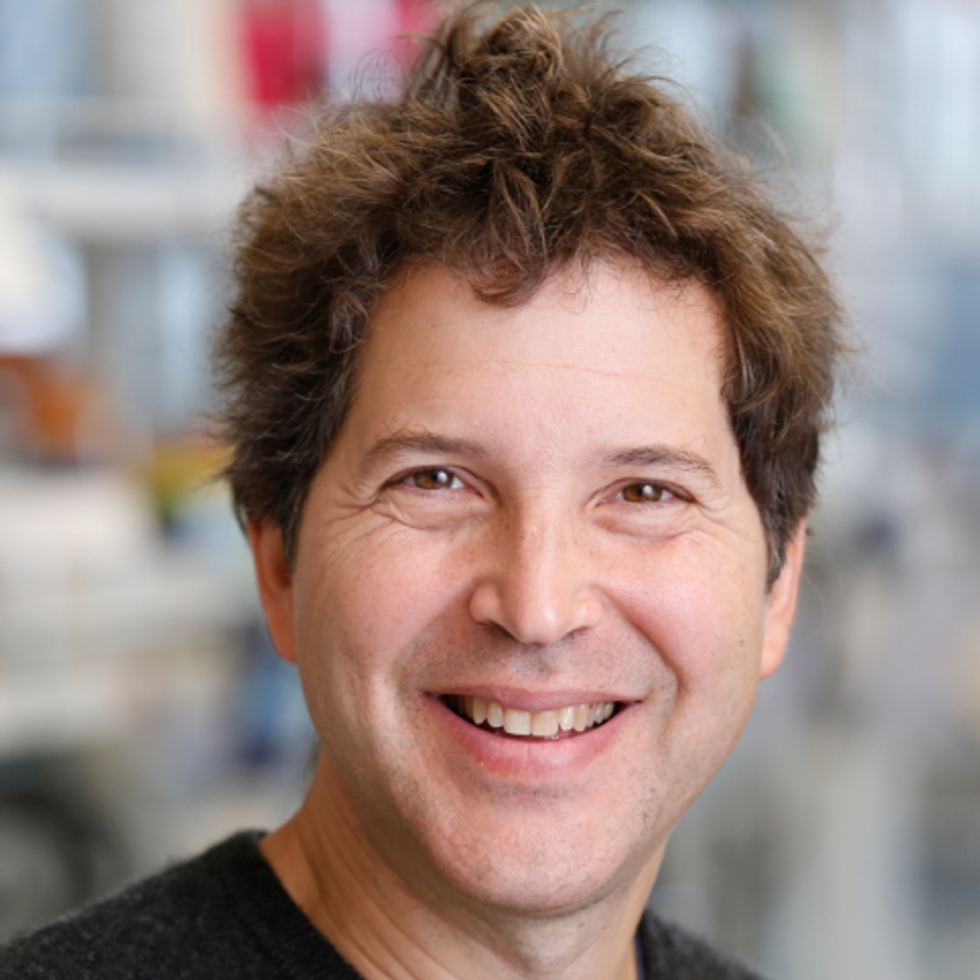
- Henrietta and Aubrey Davis Endowed Professor in Biochemistry
- University of Washington
- Investigator, Howard Hughes Medical Institute
- 2021 Breakthrough Prize in Life Sciences Laureate
I encourage you most strongly to ramp up support for basic science research in the U.S.! Discoveries can have impact far beyond the original questions being investigated, as highlighted by the recent Nobel prizes for CRISPR/Cas9. In my own research area, investigation of the fundamental principles of protein folding led to our ability to use computers to rapidly design promising vaccine, therapeutic, and diagnostic candidates in the midst of the pandemic. I also encourage you to support work on general pandemic preparedness, as with increasing population density, new pathogen outbreaks are likely to continue, and having effective countermeasures in place would greatly reduce human suffering and economic damage.
- - - - - - - - -
Cori Bargmann, Ph.D.
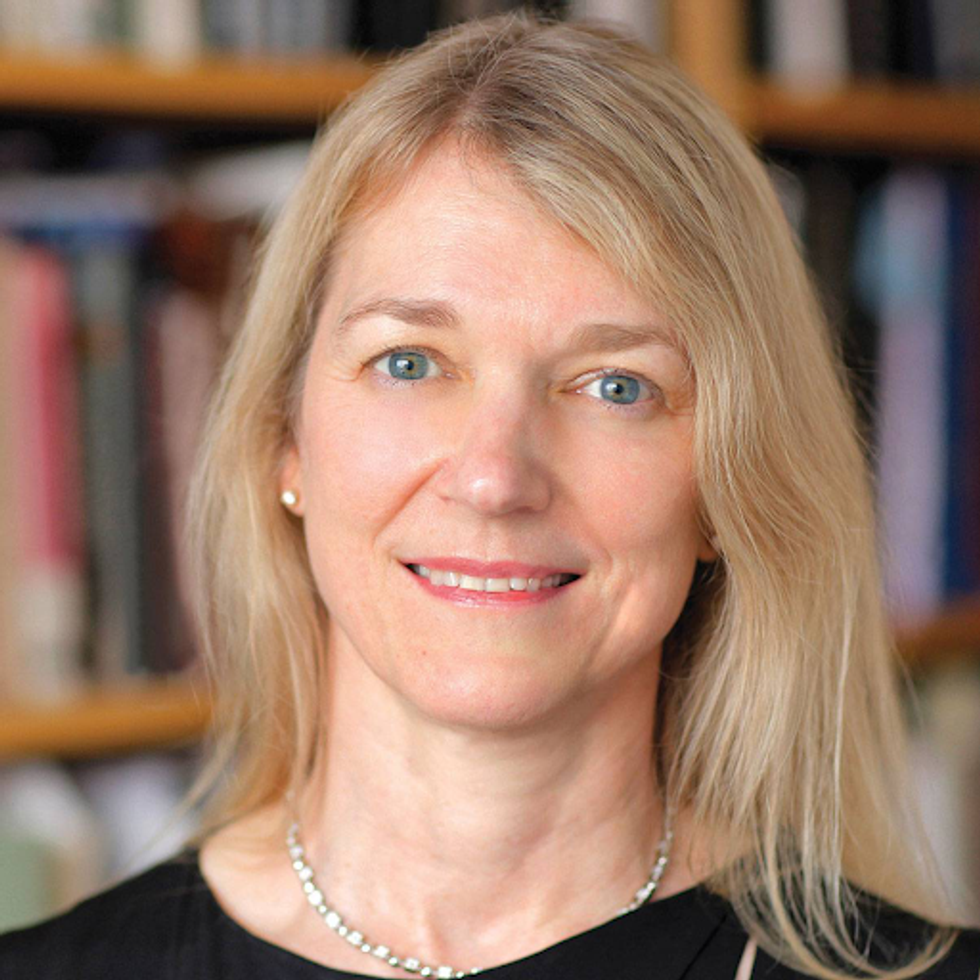
- Torsten W. Wiesel Professor
- Rockefeller University
- Head of Science, Chan Zuckerberg Initiative
- 2013 Breakthrough Prize in Life Sciences Laureate
Find all the pathogens!
To prevent and manage infectious disease, the next administration should deploy the power of large-scale molecular analysis to build a new, shared infrastructure for public health.
Currently, we identify infectious agents—viruses, bacteria, parasites, fungi—one by one at the local level. Is norovirus causing gastrointestinal distress in preschool children? Does a hospital harbor antibiotic-resistant bacteria like MRSA? Is a nursing home incubating Candida auris, a fungal superbug? We shouldn't be asking these questions one at a time. Instead, deploying large-scale molecular analysis would allow an integrated public health system to monitor all infectious diseases in real time and share the data nationwide.
First, provide DNA sequencing capacity for all local and state public health systems. Rapid, inexpensive sequencing of infectious agents should be routine whenever an outbreak occurs in a workplace, hospital, school, or prison. It can be used to track spread between people, find contaminated environments, and identify sites where a swift intervention is needed. Routine sequencing of infectious agents enables a quick, effective, and targeted public health response.
Second, use molecular methods like PCR and sequencing to track disease-causing viruses, bacteria, parasites, or fungi nationwide. In a science-informed world, we should know exactly what's making us sick. This is not primarily a health-care issue: most of the time putting a name on the organism won't change treatment. It's a public health mission: to identify dangerous infectious agents early, while there's time to act. Most of the time a respiratory infection (for example) will harbor a common rhinovirus or influenza virus, but sometimes those will not be present. In those cases, the advanced DNA sequencing method called metagenomics can identify unexpected and even previously unknown organisms, like SARS-CoV-2 in 2019. By monitoring all infectious agents systematically, we can be aware of their prevalence, spread, and virulence, and we can be prepared before the next pandemic occurs.
Finally, we need a national public health data infrastructure to share all of this information—the sequence of the infectious agent, the location at which it was found, and the disease that it caused. A common, shared data system will let infectious disease experts find and stop the next outbreak that endangers us all.
- - - - - - - - -
Jacqueline K. Barton, Ph.D.
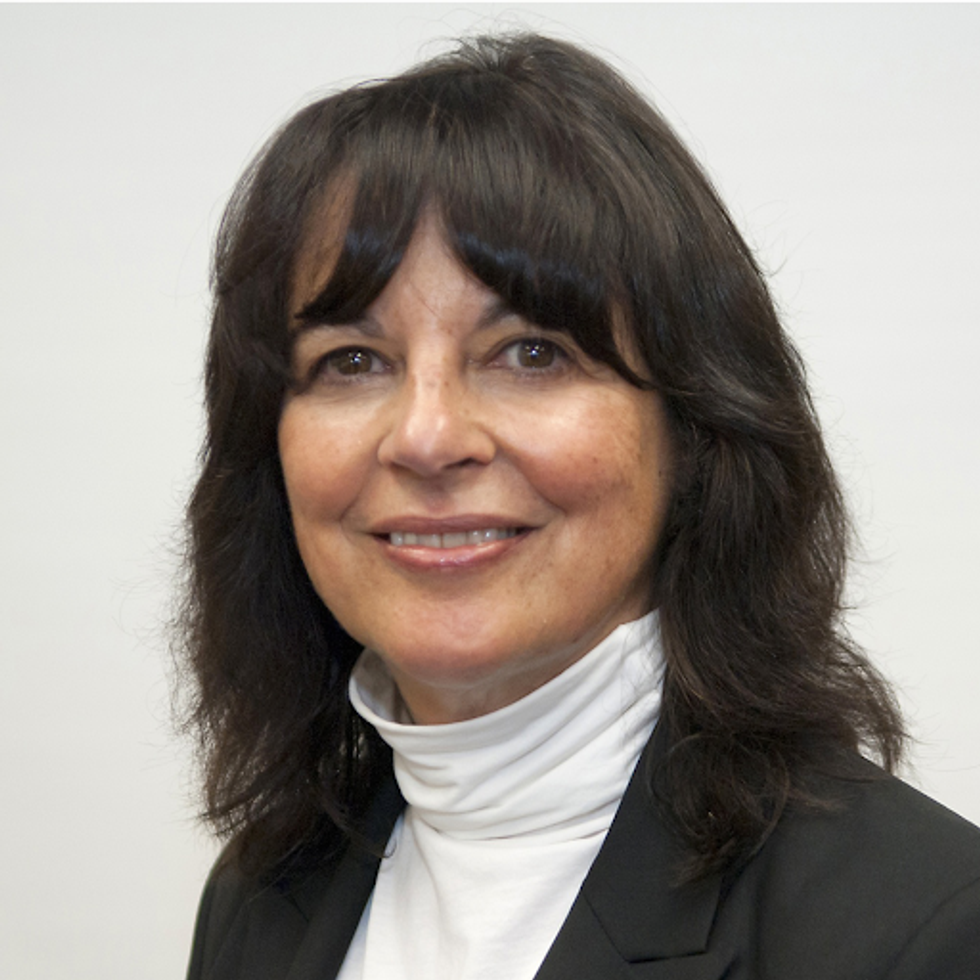
- John G. Kirkwood and Arthur A. Noyes Professor of Chemistry
- California Institute of Technology
- 2010 National Medal of Science Laureate
A critically important resource in America today is our scientific enterprise. We bring together the best and brightest and create new technologies, new medicines, new ways of living. Our scientific enterprise is critical to the health and growth of our economy, whether considering our energy industry, biotechnology, pharma, or computer technologies. And as we consider the great global challenges before us, climate change and global health, here, too, science holds the answers.
For more than fifty years, the U.S. has been the global center of scientific excellence. Our universities have provided the best in the world for research and exploration. And in contrast to universities elsewhere, our universities provide a structure that nurtures change. Assistant professors can start up their own labs, raise funds to support their new experiments, and discover quickly new ideas as to how the world works. Our industrial enterprise supports this same entrepreneurial approach to explore and develop. Small start-ups are incubators for transformative technologies. Moreover, collaboration, across disciplines and between industry and academe, allows a mixing of new ideas. And with federal support, both academic and industrial research can quickly yield new technologies and economic growth.
Science in the U.S. is therefore a unique and critical strength. Yet science is under attack. We have been able to attract the very best from across the globe to train here, to learn from the best and spread the word. This cross fertilization will not occur going forward if we squelch immigration and if we interfere with international collaboration. Moreover, research in our universities requires federal funding. Without support for basic research, where we are just learning the questions, let alone the answers, we can only make progress incrementally, and we cannot discover and develop new, transformative technologies.
U.S. science is a jewel. It needs your support.
- - - - - - - - -
Barry Barish, Ph.D.
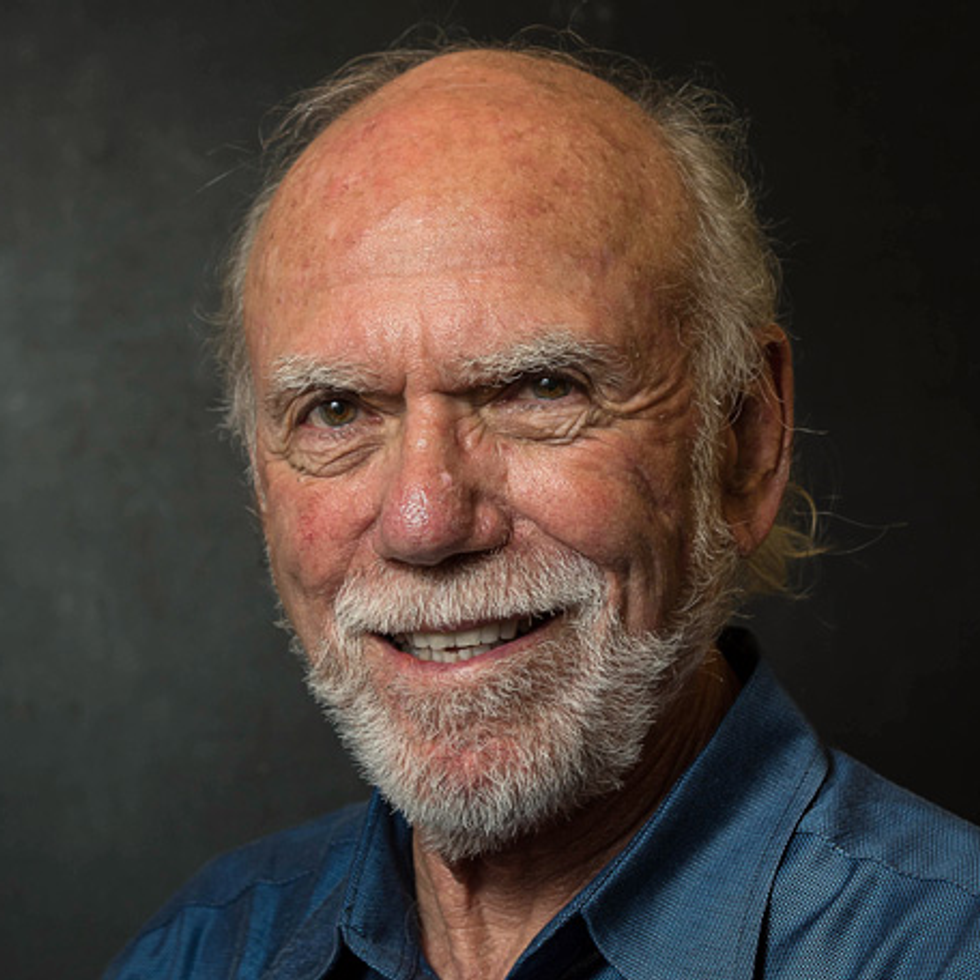
- Linde Professor of Physics, Emeritus
- California Institute of Technology
- 2017 Nobel Laureate in Physics
I am writing to stress to the new administration that you will soon be faced with crucial policy issues that require good scientific input in formulating policy. At the top of list must be providing the leadership that will bring us out of the pandemic. In that regard, formulating consistent policy on social distancing, testing and tracing, and vaccines and distribution are all complex problems that need the best scientific inputs and advice.
A second issue of great importance to the world is nuclear proliferation. We must make viable agreements with other countries having nuclear capability, as well as agreements for Iran or other countries that could develop capability. Renewing the U.S. nuclear stockpile is a very complex domestic issue that again needs the best scientific guidance.
A third crucial issue is climate change. We have had unprecedented heat, melting ice caps, forest fires, polluted cities, etc. in the recent past. We must develop forward-looking and workable policy, working with the rest of the world and using the best advice of scientists.
Of course, there will be other major issues, where the advice of scientists will be crucial to decision making and formulating policies. The U.S. is a wonderful place to be a scientist and to do science. Please take advantage of our skills and knowledge as you face the challenges of the coming years.
- - - - - - - - -
May Berenbaum, Ph.D.
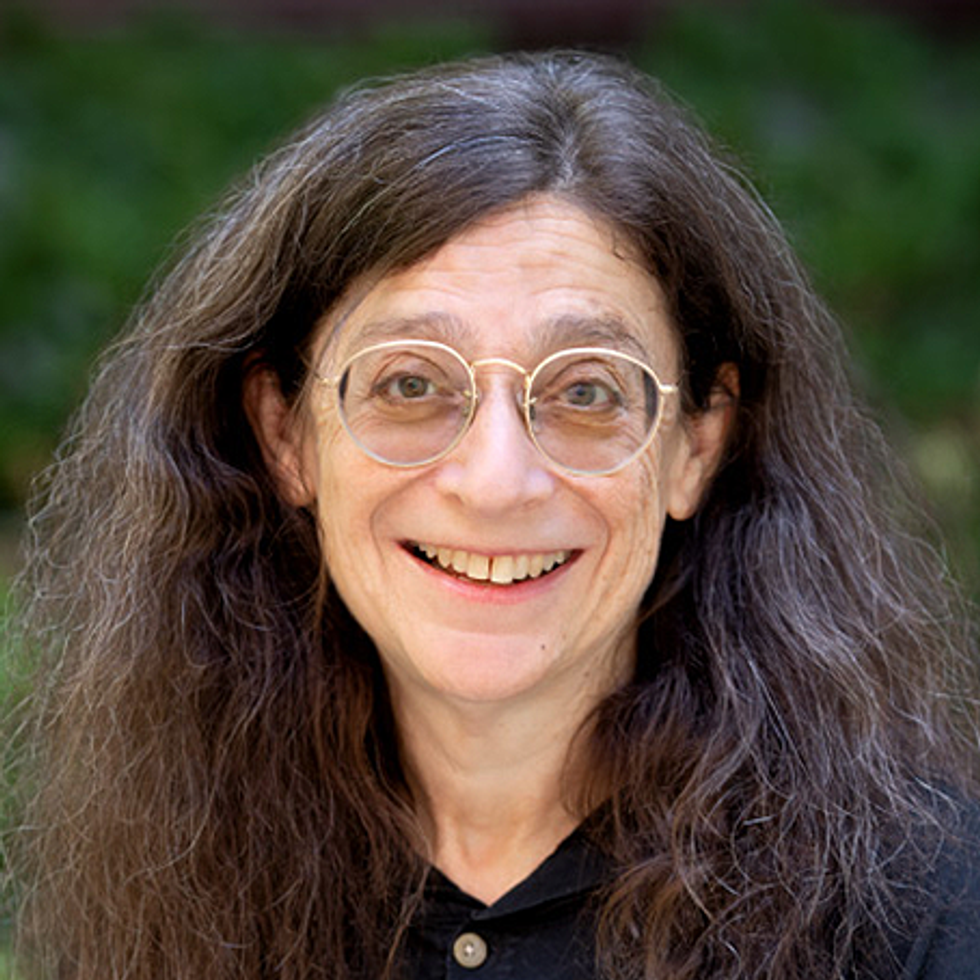
- Professor and Head of Entomology
- University of Illinois at Urbana–Champaign
- 2012 National Medal of Science Laureate
Congratulations on your election, during a moment in history when the health and well-being not only of the human population but also the biodiversity of the planet will almost certainly be affected by decisions you make while you're in office. For this reason, please depend on the knowledge that the scientific community can offer to inform your decision-making. In 1863, your predecessor Abraham Lincoln, recognizing the need for independent, objective advice for a nation embroiled in a civil war, created the National Academy of Sciences as a mechanism to obtain such advice. Scientists answered the call, advising the federal government on many scientific and technological issues, including consistency across weights and measures and accuracy of magnetic compass readings on iron-hulled warships. For over 150 years, the federal government has benefited from making decisions based on the best independent, objective scientific evidence available from a rapidly expanding community of scientists. Keep in mind, though, that scientific research comprises not just the knowledge produced, but also the process through which it's obtained, a process designed to be iterative, self-correcting, and objective. It's true that scientific views can change, sometimes rapidly—but such change is intrinsic to the process, as long as changes come not from whimsy or political stratagems, but from the collective accumulation of well-designed, unbiased, repeatable studies, particularly when new fields or unprecedented problems arise. The utility of relying on scientific advice in policy-making has been abundantly demonstrated, as have the often tragic consequences of rejecting a strong scientific consensus to suit political agendas (think of the deaths of millions resulting from the Soviet-era implementation of Trofim Lysenko's politically tinged agronomic theories). Like it or not, your legacy will depend on the extent to which you embrace both the process and the products of the scientific enterprise.
- - - - - - - - -
Martin Chalfie, Ph.D.
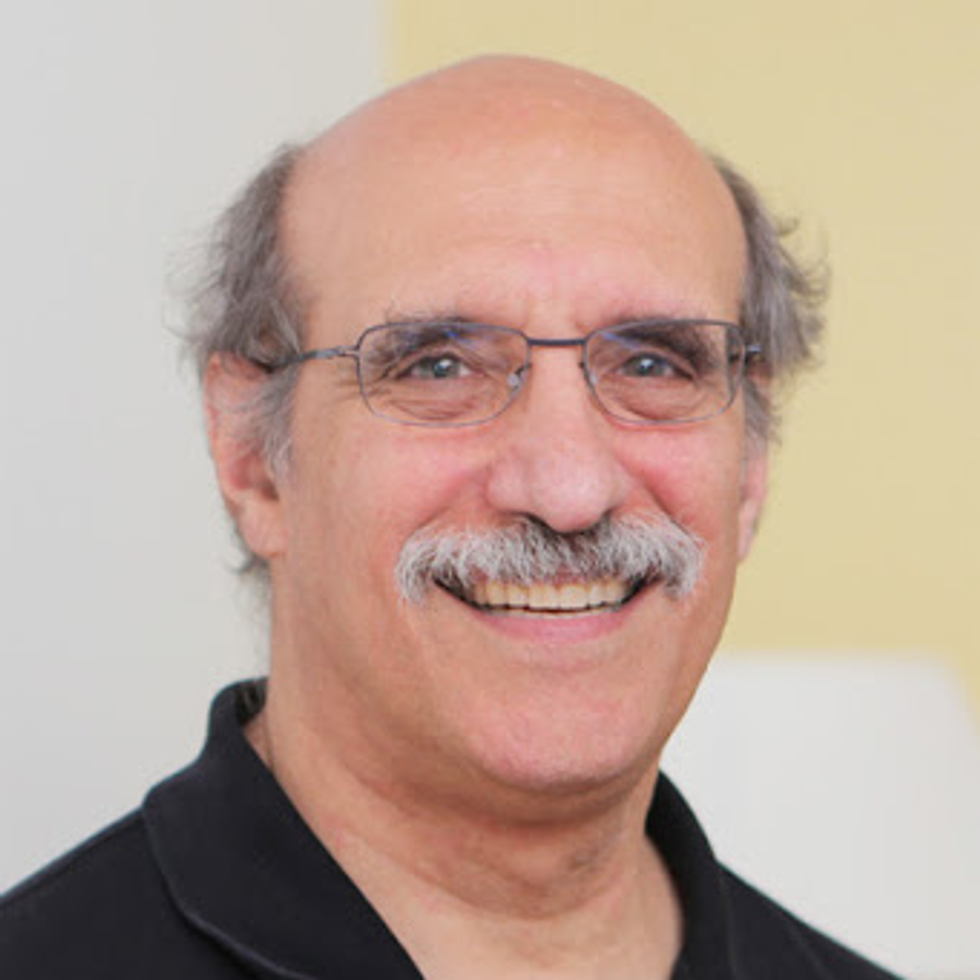
- University Professor of Biological Sciences
- Columbia University
- 2008 Nobel Laureate in Chemistry
I have never been prouder of the scientific enterprise than during the COVID-19 pandemic. Scientists, healthcare professionals, and others are devoting their knowledge and skills and often redirecting their research to solve the problems of SARS-CoV-2 and the destruction it is causing. These scientific efforts would not have been possible without our previous understanding of basic biological processes. This understanding is what allows people to sequence genomes, determine protein structures, develop novel ways of detecting and interfering with the virus, and understand how viruses take over cells and how the body responds to infection. As part of preparedness for the next health crisis, we must continue to build our scientific knowledge, because we do not know what we will need to know.
The astonishing response of the scientific community to this pandemic shows how much science can contribute and what it can accomplish. The question for the future is: how can we maintain our momentum? We can do so, first, by increasing the support for both fundamental and applied research, and we need to take a broad view of what to support. I received my Nobel Prize for my development of a method to watch cells work that was based on a jellyfish protein. Tens of thousands of research projects have utilized this protein to expand our understanding of basic biology and to study human disease. Second, we need to put more resources into educating future scientists. We must support and expand STEM programs in elementary and high schools, research opportunities for college students, and training programs for graduate students and postdoctoral researchers. And we must provide opportunities to increase diversity within the sciences, including encouraging and supporting the entry of underrepresented minorities and first-generation, low-income college students into careers in the sciences. Third, we should ensure that governmental decisions and administrative policies are based on strong scientific consensus and are not subjected to anti-science political pressure. We have a long tradition of the sciences and scientists helping our country. Indeed, in 1863 Abraham Lincoln helped found the U.S. National Academy of Sciences specifically to provide unbiased advice to the nation. To this day, the National Academies of Sciences, Engineering, and Medicine continue to do so. Their advice and that of the many conscientious and concerned scientists in our country should be heeded if we want to preserve our environment, improve the health of our population, and continue to reap the benefits that Science provides.
Finally, Mr. President, you have the important role of encouraging scientific excellence and recognizing scientific accomplishments, to spur others to make the discoveries so necessary for our future. For many years, the U.S. winners of the Nobel Prize have been invited to the White House and met with the President before going on to Sweden. Regrettably, these events have not occurred in the last four years. I encourage you to reinstate this very welcomed tradition. These meetings at the White House are the one time that the country, as represented by the President, thanks the Laureates for their achievements.
- - - - - - - - -
Joanne Chory, Ph.D.
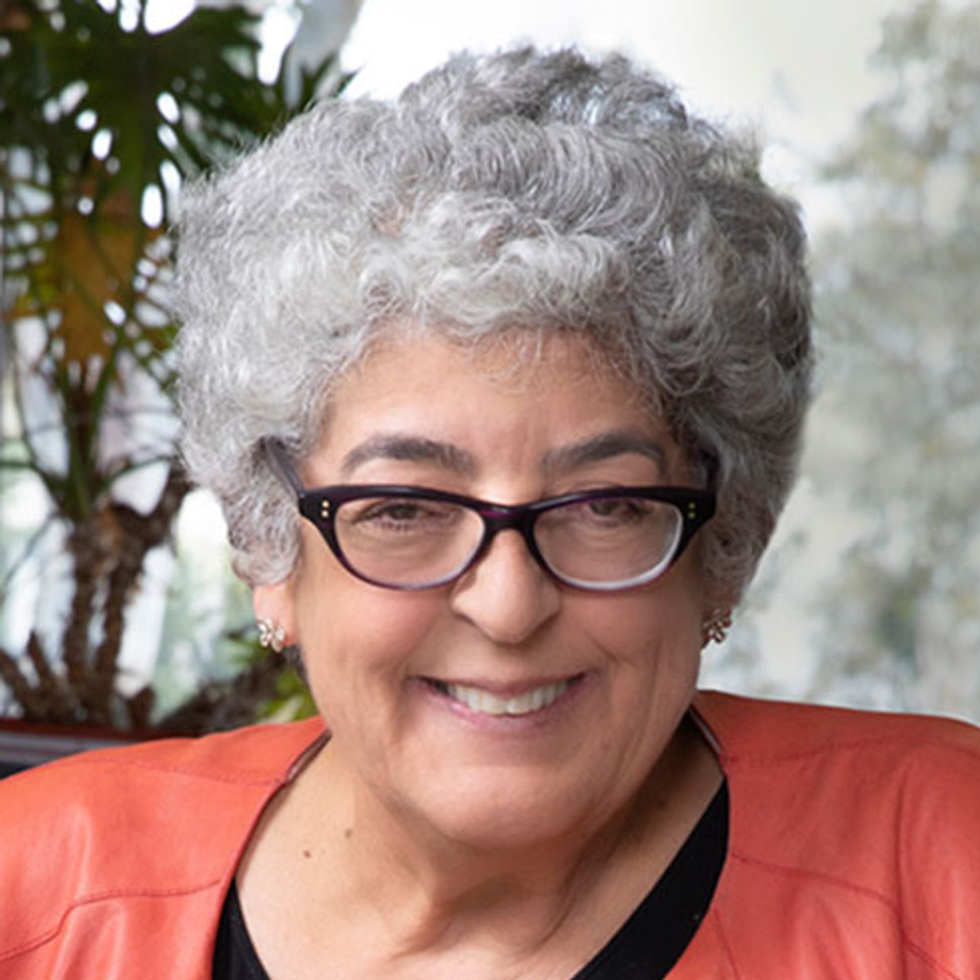
- Professor and Director of the Plant Molecular and Cellular Biology Laboratory
- Howard H. and Maryam R. Newman Chair in Plant Biology
- Salk Institute for Biological Studies
- Investigator, Howard Hughes Medical Institute
- 2018 Breakthrough Prize in Life Sciences Laureate
Humanity is facing unprecedented challenges of a simultaneous and urgent nature rarely before seen in our history. A pandemic infection has brought the world's economy to its knees. Authoritarian assaults on democracy are increasing mistrust in governments and institutions. Global climate change is destabilizing lives and livelihoods. Now, more than ever, Americans and our allies are looking to the U.S. to lead the world through these monumental challenges.
Science and scholarship are the most powerful tools by which we may understand these challenges and how best to address them. The pursuit of truth, which is the bedrock of science and the linchpin of functioning democracy, must be our top priority for the next four years.
I urge you to commit to making evidence-based policy decisions, and to making science and foundational research your compass to help guide the world to a healthier, more stable future. It is not hyperbole to say humanity is at a crossroads, and that we face existential threats in the form of climate change and distrust of science.
Jonas Salk, who developed the first polio vaccine in response to the polio pandemics of the early 20th century before going on to found the Salk Institute for Biological Studies, once said, "Our greatest responsibility is to be good ancestors."
We owe future generations a healthy, habitable world.
- - - - - - - - -
Nina Fedoroff, Ph.D.
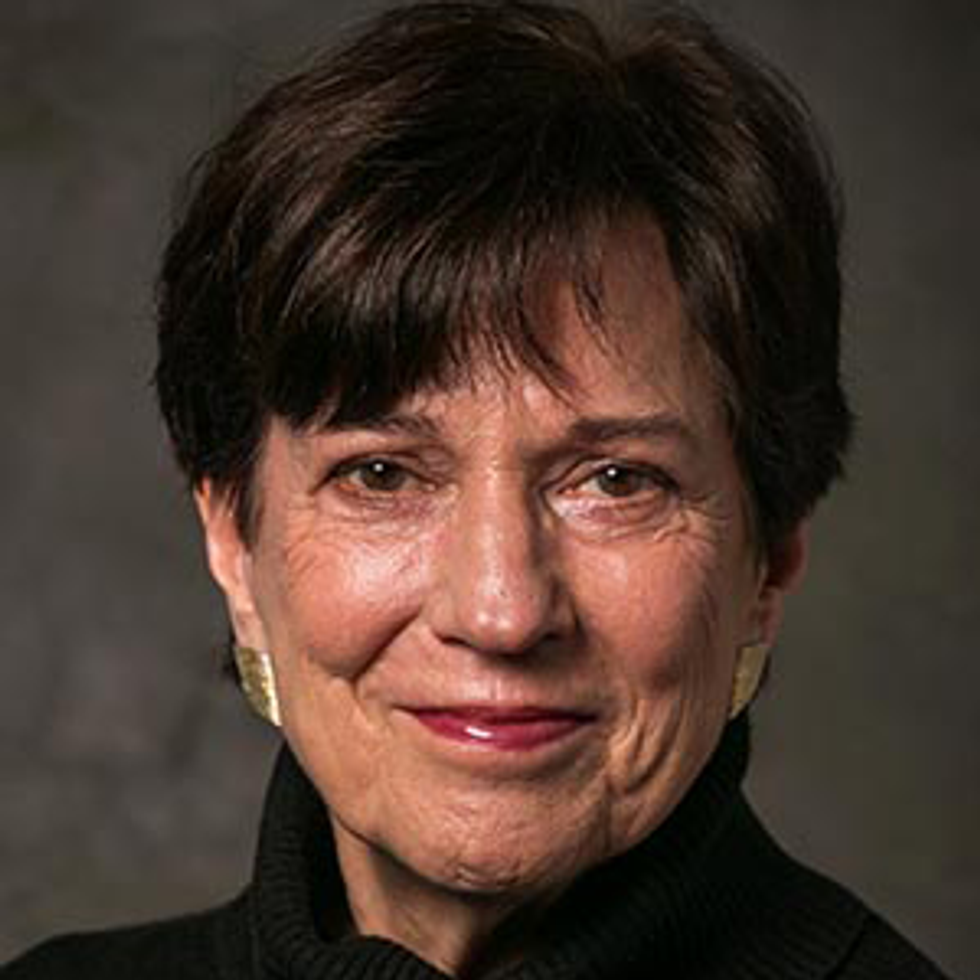
- Emeritus Evan Pugh Professor, Pennsylvania State University
- Senior Science Advisor, OFW Law
- 2006 National Medal of Science Laureate
I wish to draw your attention to a thorny issue whose impact on America will steadily grow in coming years as climate warming becomes ever more destructive to our food supply. I speak of the growing gap between what science can do to help agriculture and what's actually being done for farmers.
Spectacular advances in genetic knowledge and methods over the past half century have made it possible to adapt agriculture to a warming climate even while increasing agriculture's productivity and sustainability and reducing its environmental footprint.
But over the same half-century, public opinion has been systematically turned against the use of such modern methods of genetic modification (GM) by the organic food industry and public interest groups who have successfully vilified GM and created fear to increase their market share and raise money. A majority of consumers is now convinced that GM foods are bad or dangerous.
But the science says that GM foods are entirely safe for consumption by both people and animals. GM crops have now been grown commercially for a quarter of a century, boosting farmer incomes around the world, even while reducing pesticide use and greenhouse gas emissions. Unfortunately, current regulatory policy has all but precluded the rapid development of GM animals.
It is essential that the upcoming administration listen to the science and direct efforts toward relaxing excess regulatory constraints on GM. But more than that, it is essential that the government boldly promote GM approaches in agriculture to overcome the widespread disinformation promulgated by anti-GM groups. Public acceptance of GM foods is critical to their success in the marketplace.
Government investment can encourage private and public sector scientists to develop badly needed agricultural organisms biologically protected from the pathogens, pests, and stresses of the warming climate. But unequivocal government support of GM foods will be crucial to unleashing the scale of investment needed for farmers to stay ahead of the warming climate's growing downward pressure on their ability to feed the nation.
- - - - - - - - -
Andrew Z. Fire, Ph.D.
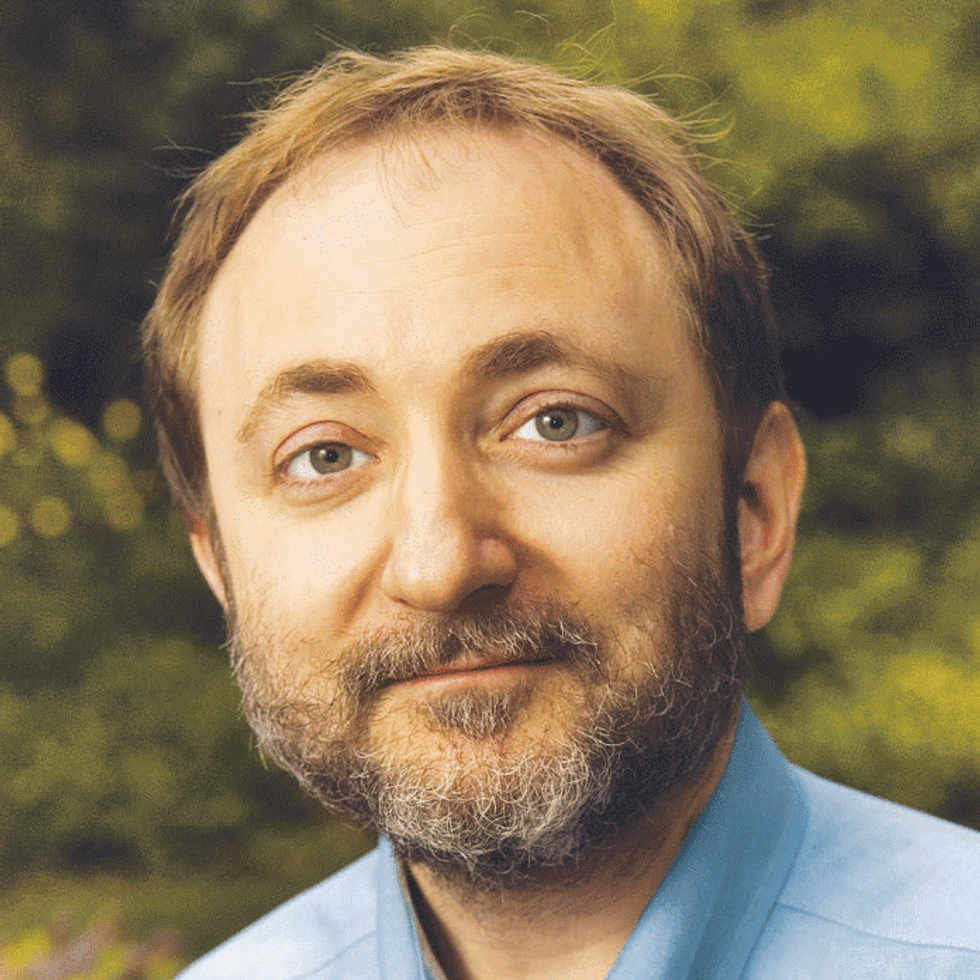
- Professor of Pathology and Genetics
- Stanford University School of Medicine
- 2006 Nobel Laureate for Physiology or Medicine
The next President of the United States can make the world a better place
But not alone. He or she will need to
Communicate with Americans
To know what is working in America
To know what needs to be fixed
To convey what people can do for their communities, their country, and their world
Communicate with scientists and experts
To understand what we have learned and what we can do
To understand the uncertainties in all science and technology
To understand what resources are needed to find and implement solutions
Engage beyond our borders
Because we share a fragile planet
The U.S. scientific community can make the world a better place
But not alone. We will need to
Listen to communities across the US to know where knowledge and solutions are needed.
Carefully and clearly convey facts and consequences in areas where we know.
Debate and unashamedly convey uncertainties and areas where we don't know.
Continue to engage with other scientists here and elsewhere to develop new approaches and understanding
Train a new generation of scientists to address current and future challenges
The American People can make the world a better place
But not alone. We will need to
Convey to leaders and scientists what is working and what needs to be fixed.
Educate ourselves in a broad range of science to make rational decisions
Participate in dialog toward designing solutions that improve life for everyone
Work together and listen with each other and with the world.
- - - - - - - - -
Joanna S. Fowler, Ph.D.
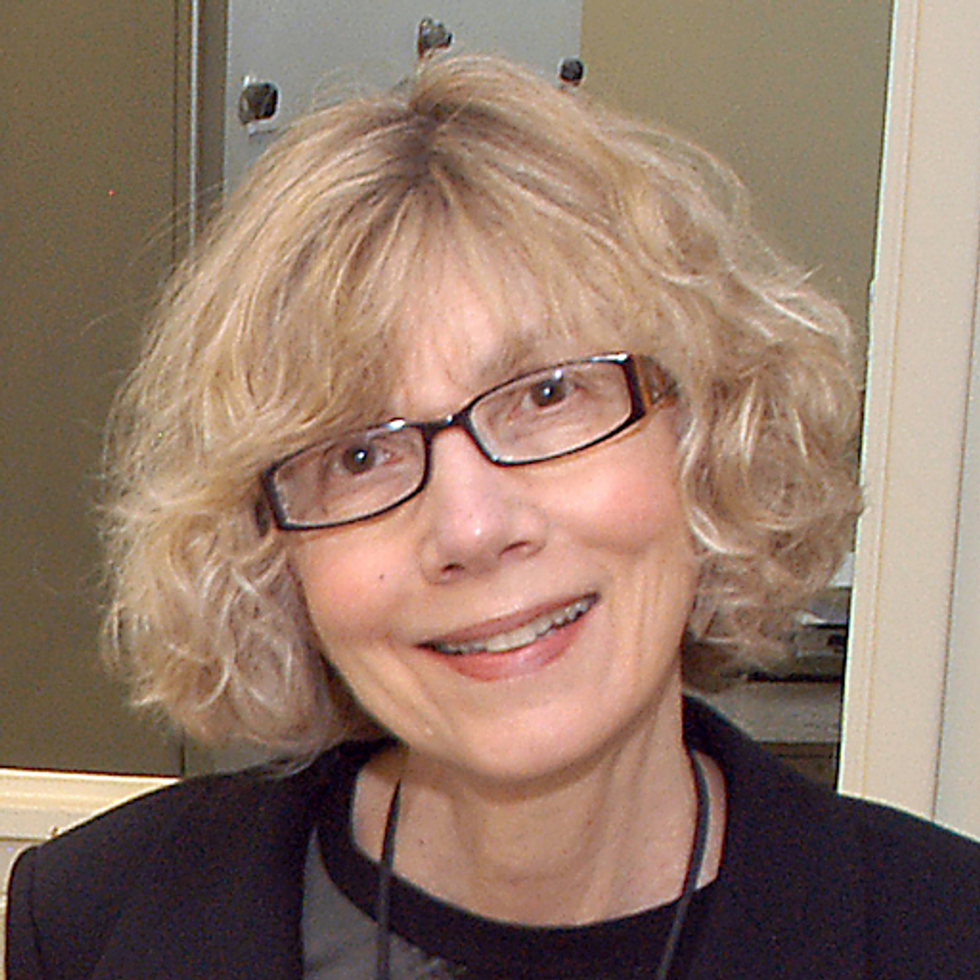
- Senior Scientist Emeritus
- Brookhaven National Laboratory
- 2008 National Medal of Science Laureate
Throughout our history, the United States has inspired and attracted students and scientists from around the world. They are typically motivated by the freedom to do creative work in our universities and research institutions unfettered by political interference. Immigrant scientists now make up 25% of our science and technology workforce and have contributed enormously to our economic growth and to the health and well-being of all Americans. They have also enhanced our prestige internationally, with immigrants to the United States winning 35% of the Nobel Prizes awarded to Americans in physics, chemistry, and medicine since 1901 and pointing to America's vision in embracing talent from around the world.
Unfortunately, recent anti-immigrant rhetoric and policies such as the travel ban and a recently issued proclamation that temporarily restricts many types of legal immigration (including students and scientists) have led many international students and scientists to reconsider building their careers in the United States.
It is urgent that our next President reassures the international community and our international students and scientists that (1) the United States will be an unwavering voice for bringing the power of science to the solution of global problems including the COVID-19 pandemic and climate change; (2) our policies and actions will be informed by science; and (3) international students and scientists who choose to come to the United States (as well as those already in our country) will be welcome and protected from political interference irrespective of their race or their country of origin.
- - - - - - - - -
Jeffrey Friedman, M.D., Ph.D.
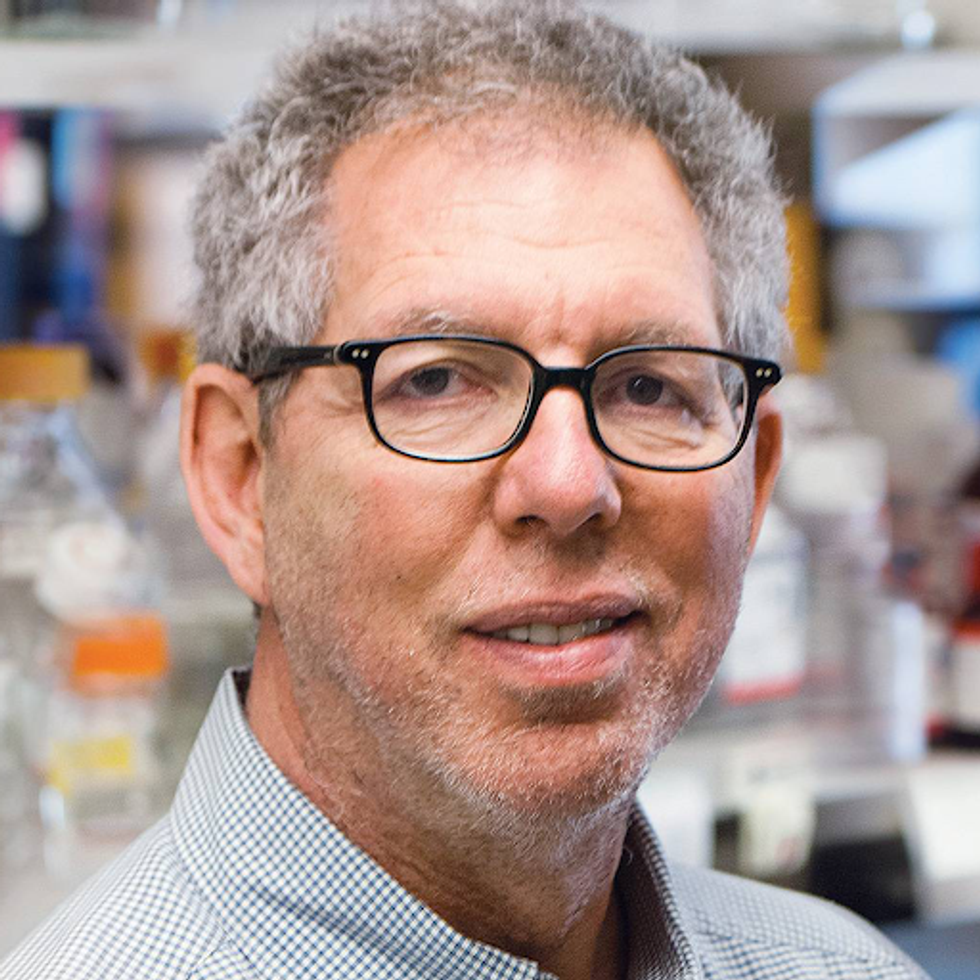
- Marilyn M. Simpson Professor
- Rockefeller University
- 2020 Breakthrough Prize in Life Sciences Laureate
The COVID-19 pandemic has reaffirmed the critical role that science plays in peoples' lives. Stunning advances over the last 75 years made it possible to identify the infectious agent, develop robust new diagnostics, implement increasingly effective treatments (with more to come), and develop and test new vaccines all with startling rapidity. Compare this to the response to the Spanish Flu epidemic a century ago when it took years before the viral etiology was even confirmed. This remarkable progress provides a powerful reminder of why generous funding of science is crucial.
It is important to remember, however, that this stunning progress was made possible not just by scientists applying an ever-expanding body of knowledge to the current crisis but also by the innumerable scientists who laid the foundation that underpins that knowledge. This includes the scientists who, by following their own curiosity, showed that genes were made of DNA, defined how DNA after being copied into RNA provides the blueprint for making proteins in cells, and discovered that the genes in some viruses such as COVID are made of RNA rather than DNA. Still other scientists developed methods for isolating and studying genes and their functions in the laboratory.
In many cases, these enabling technologies depended on advances that had no obvious applications at the time, such as the discovery of restriction enzymes, proteins which cut DNA in specific places. This research was motivated not by practical considerations but by the curiosity of Nobel Prize winners Dan Nathans and Ham Smith who wanted to understand how bacteria protect themselves from the viruses (known as bacteriophage) that infect them. It was this advance, and many others like it, that helped to usher in the era of modern science that empowered the remarkable response to the current pandemic. So as we make the case to increase the funding of science, we need to ensure that the investments include not only the application of our current knowledge to our immediate needs, but also include investments in the curiosity-driven research that makes those applications possible.
- - - - - - - - -
Jerome I. Friedman, Ph.D.
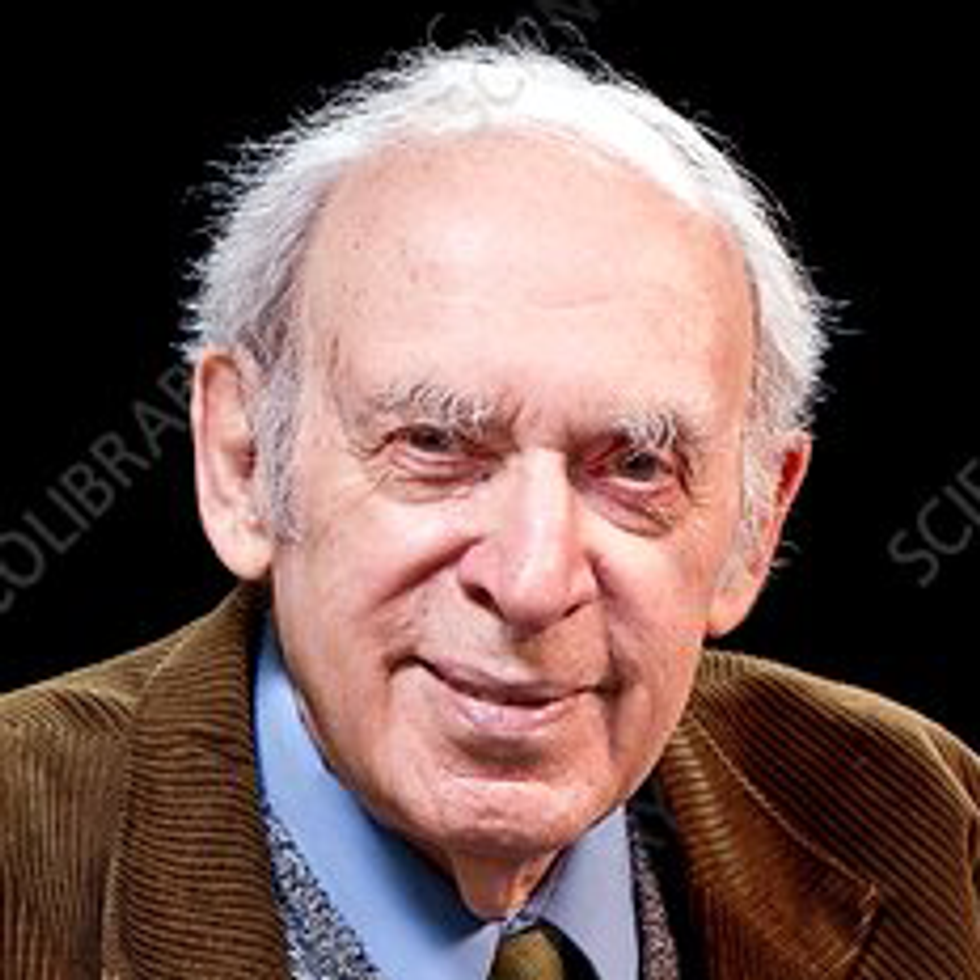
- Institute Professor and Professor of Physics, Emeritus
- Massachusetts Institute of Technology
- 1990 Nobel Laureate in Physics
Investment in science and technology is an absolute necessity to develop the innovations that are needed to mitigate and reverse damage to the environment, protect our health, ensure future improvements in our standard of living, and stimulate economic growth. Applied research and invention play extremely important roles in innovation, but it should be emphasized that basic research has in general produced the major conceptual breakthroughs that have resulted in radically new technologies. For example, at a time in the past, electricity and magnetism were just laboratory curiosities. Now they are integral to the technologies of modern society. The study of the structure of the atom has led to the digital world in which we now live, and understanding the structure of DNA has revolutionized medicine. Such breakthroughs are needed to address and reduce the serious problems that afflict our world. To achieve our goals, we need to expand our base of fundamental knowledge to produce the new technologies that we desperately need. This will require a substantial increase in investment by the Federal Government in all types of research, and, because industry does not support basic research as it did in the past, the funding of basic research is especially dependent on the Federal Government. Funding for research is not a cost; it is an investment that will pay back rich dividends in the future, as it has done in the past.
- - - - - - - - -
Elaine Fuchs, Ph.D.
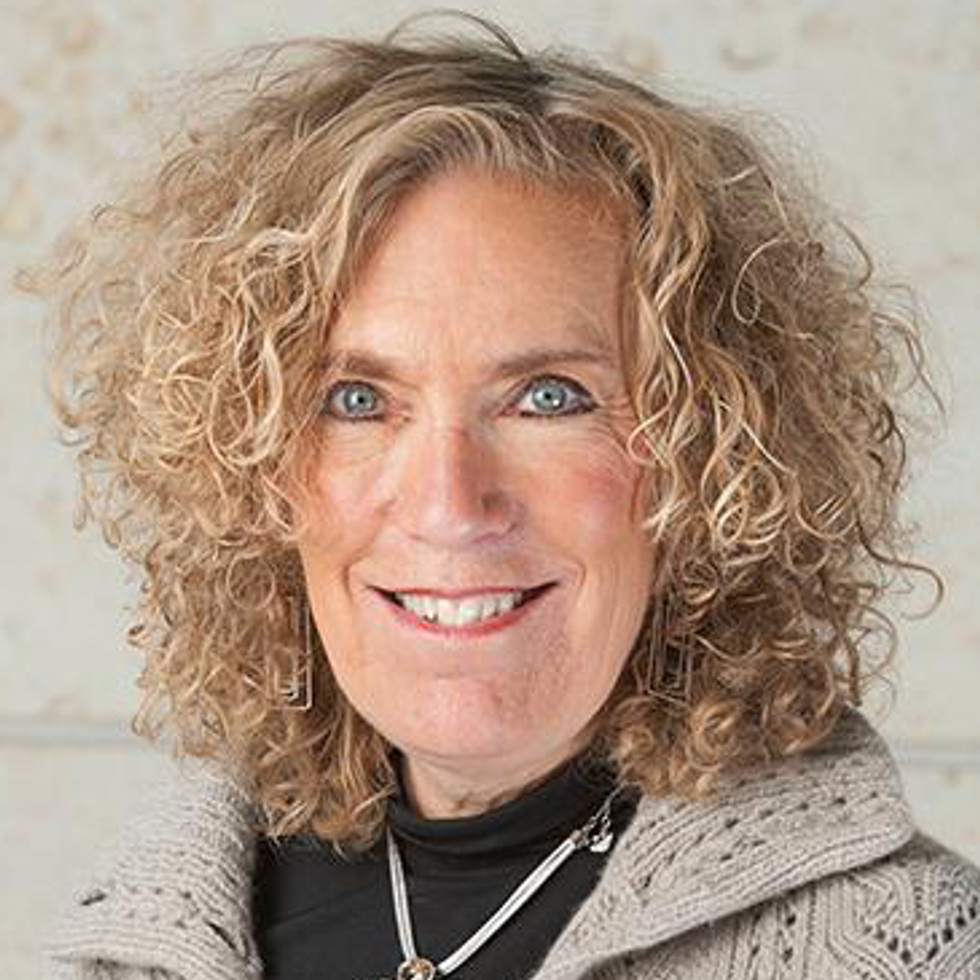
- Professor of Mammalian Cell Biology and Development
- Rockefeller University
- Investigator, Howard Hughes Medical Institute
- 2008 National Medal of Science Laureate
The COVID-19 pandemic exemplifies why our nation needs an effective, rapid response team of scientific experts to help contain the spread of infectious pathogens. In times of a pandemic, America must also mobilize government funds to enable another cadre of scientists to identify ways to disarm the microbes. However, such efforts will only succeed when the existing basic science foundation is strong. Our nation has long been the world's leader in biomedical research, and our accrued knowledge of viruses, their ability to infect epithelial cells, and the inflammatory responses that they elicit, gave our scientists the jumpstart necessary to rapidly develop vaccines and neutralizing antibodies against the SARS-CoV2 virus. With the ever-increasing barrage of unexpected health challenges that our changing climate imposes upon us, America must continue to strengthen and broaden our basic science foundation and to provide the training and support to prepare the next generations of scientists to participate in this endeavor.
As a basic scientist working at the interface between science and medicine, I've witnessed numerous examples in my career that illustrate how important basic science is for advancing new and improved treatments for human conditions. For example, mutations in a nuclear modification first described in algae causes a lethal brain cancer in children. Additionally, current cancer treatments often make patients sick because they harm both healthy and cancerous tissue, and the cancers often relapse after treatment. Determining which cancer cells are responsible for relapse and how they differ from the healthy stem cells that fuel normal tissue growth and repair, could lead to blueprints for designing therapeutics that effectively kill these resilient cancerous cells without harming the normal tissue.
Our government's long-standing support for basic science makes it easier than ever before to solve the scientific puzzles needed to disarm threats to our health and fitness. However, our bodies are continually exposed to new stresses, new microbes, new pollution. By keeping a high pace of basic science and discovery, and inspiring and training the best and brightest young minds from diverse backgrounds, we will stand the best chance of being prepared for whatever nature has in store for us in the future.
- - - - - - - - -
H. Robert Horvitz, Ph.D.
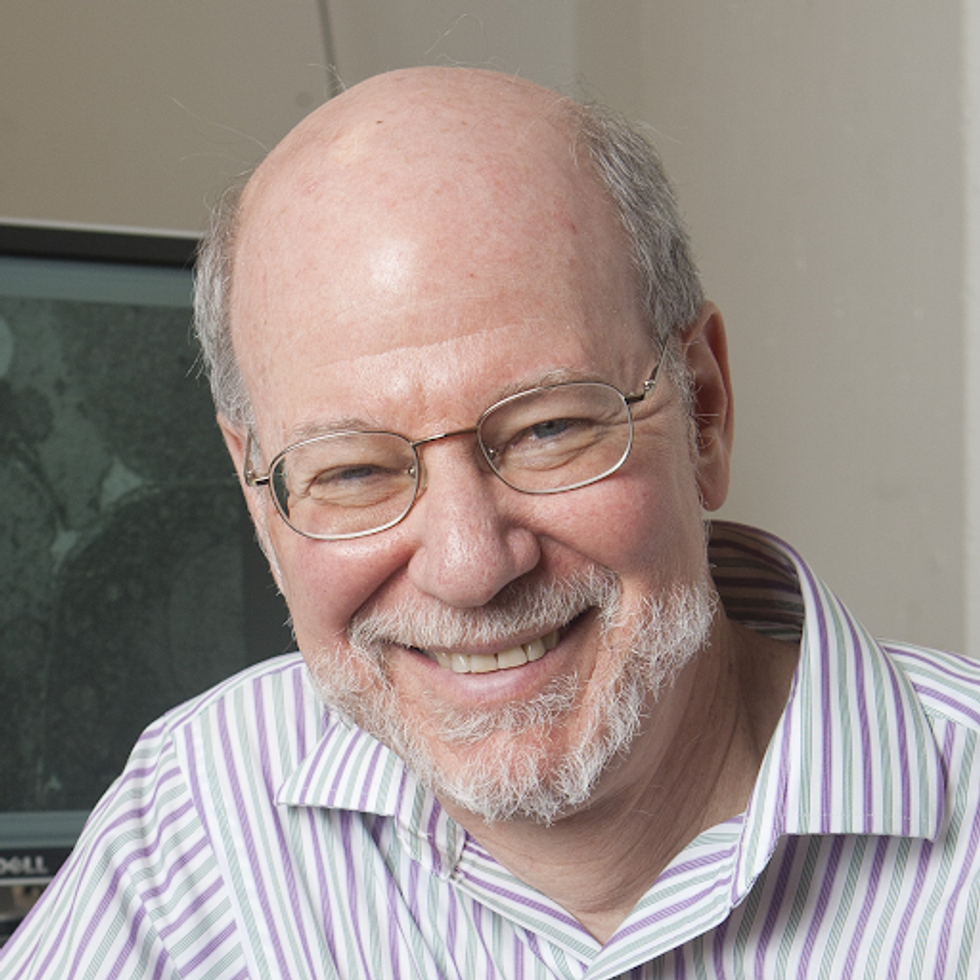
- David H. Koch Professor in Biology
- Massachusetts Institute of Technology
- Investigator, Howard Hughes Medical Institute
- 2002 Nobel Laureate in Physiology or Medicine
While resoundingly validating the investment in biomedical research that has been made over the past decades, the response of our nation to the COVID-19 pandemic has also cast a harsh light on us, including on aspects of our national scientific and biomedical enterprise, revealing gaps in understanding as well as in the efficient application and deployment of available knowledge and technology. As we enter a new Presidential term, American science needs to draw on its COVID-19 experiences, both the innovative and the painful, to face a changing world. Scientists have much to learn in the coming months from COVID-19 about emerging health challenges, about safeguarding our nation's physical health, and about sustaining American leadership in biomedical research. By leading our country over the next four years, you will have the opportunity to impact the health and safety of generations of Americans.
Past federal investment in biomedical research has been extraordinarily productive. Largely through research conducted or supported by the National Institutes of Health (NIH), the United States has led the way in pioneering crucial diagnostic procedures, novel treatments, life-changing cures, and innovative prevention strategies for a broad variety of disorders, including cancer and heart disease. This core of evidence-based science powered our response to the pandemic as NIH-supported scientists unraveled the basic biology of the SARS-CoV2 virus, drove unprecedentedly rapid diagnostic and vaccine development, and sharpened treatment protocols. Maintaining—and bolstering—that core is critical to our national health, economy, and security.
The NIH must now reaffirm its commitment to fundamental and bold biomedical research. That is why, along with 13 of my colleagues from across the nation, I am preparing a report that seeks to advise the next Administration about how best to capitalize on the enormous promise of 21st-century biology. Our NIH Vision and Pathways report will provide a perspective on and vision for biomedical research and health, as well as describe specific proposed changes that will focus and strengthen NIH to achieve that vision. Our suggestions encompass four areas concerning NIH structure and operations:
- Research: Driving Innovation and Discovery
- Training: Preparing the Next Generation
- Administration and Operations: Maximizing Opportunity
- Appointment of the NIH Director
Your administration can seize this opportunity to shape the NIH, a crown jewel of the federal government, in ways that will make it more impactful and efficient in improving the health and well-being of Americans and will ensure the leadership position of our country in the field of biomedicine for decades to come.
- - - - - - - - -
David Julius, Ph.D.
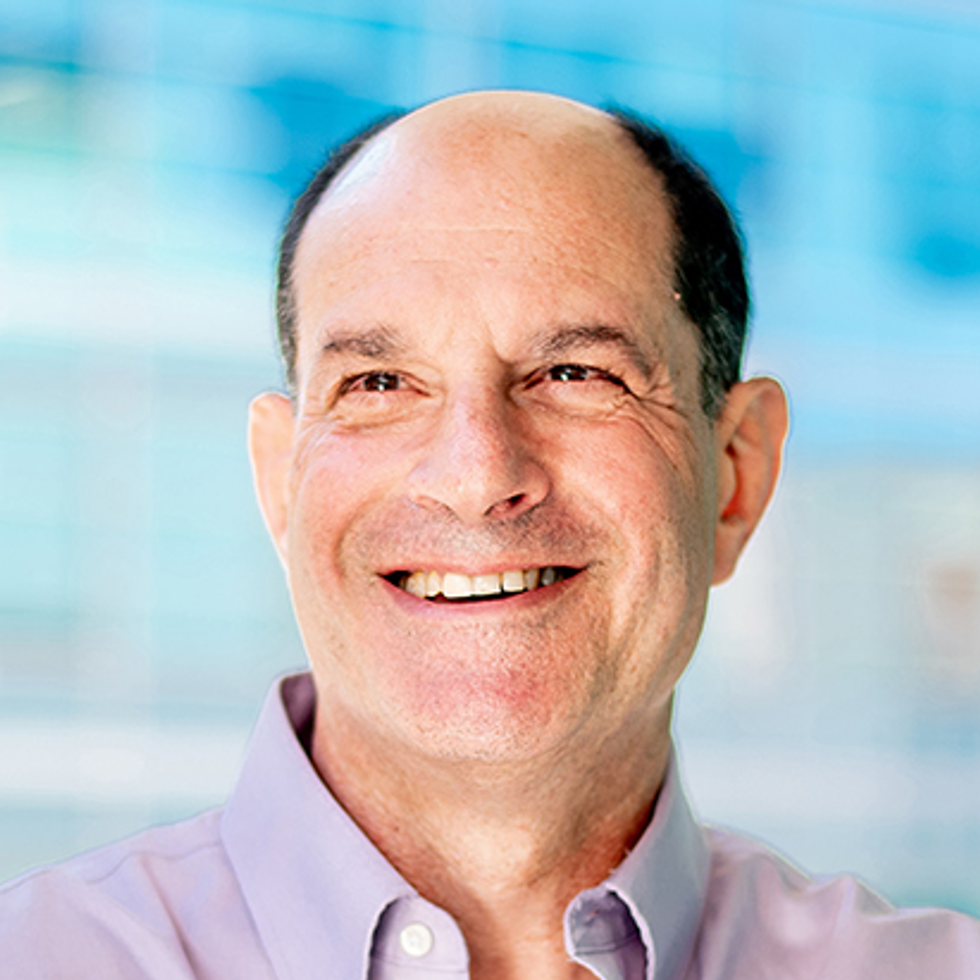
- Professor and Chair of Physiology
- University of California, San Francisco
- 2020 Breakthrough Prize in Life Sciences Laureate
A couple of Thanksgiving dinners ago, I got into a discussion with a relative who disparaged climate change as a hoax. I pointed out that he was the same person who prided our country for its legendary technical and scientific accomplishments, such as building the Panama Canal, landing on the moon, or conquering polio. Honestly, I was amazed at this contradiction: how can someone believe so fervently in the idea of "American Exceptionalism" yet now devalue and discount the advice of our scientific and engineering community? Can we really have it both ways?
Perhaps more than anything else, the next President of the United States must take on the goal of repairing and reestablishing respect for education, knowledge, professional expertise, and fact-based decision making. Otherwise, the foundation of our nation's legendary scientific and engineering excellence shall crumble. Scientists and engineers hail from all corners of our country and world—urban and rural, wealthy and poor, etc. What unites us is a passion for curiosity, discovery, creativity, and problem solving. Our next leader must challenge the canard that scientists constitute a class of intellectual and cultural elites separate from the rest of society.
With regard to biomedical research, I remain a believer in the power of basic, curiosity-driven research. Time and again, we find that transformational discoveries in science and medicine come from unexpected or unanticipated avenues of inquiry (think CRISPR gene-editing technology, discovery of innate immune pathways in flies, or snake venoms as the inspiration for anti-hypertensive drugs). Certainly there are moments—such as the current COVID-19 pandemic—to mobilize goal-directed efforts, but we must not forsake bedrock basic, curiosity-driven research programs, which will continue to yield discoveries that move biomedical research and technology forward so we can tackle known diseases or the next unforeseen global health challenge.
- - - - - - - - -
William G. Kaelin, Jr., M.D.

- Sidney Farber Professor of Medicine
- Dana-Farber Cancer Institute and Brigham and Women's Hospital
- Harvard Medical School
- Investigator, Howard Hughes Medical Institute
- 2019 Nobel Laureate in Physiology or Medicine
Winning the Nobel Prize last year has caused me to reflect on some of the ways government policies influenced my career. I was born in 1957, about six weeks after the Sputnik launch. Science and engineering were celebrated in the United States during my childhood, partly because of the ensuing space race and the Cold War. Bipartisan support for science education and scientific research was like mom and apple pie for most of my early years. I had the opportunity in 1974 to attend a National Science Foundation Student Science Training Program in Computers and Mathematics that absolutely transformed me as a student because it was the first time I was surrounded by students who were almost uniformly smarter than I was and the first time I encountered a curriculum that I found truly challenging and interesting. During my clinical training to become a doctor, I routinely encountered brilliant physician-scientists, many of whom had trained at the National Institutes of Health (NIH) during the Vietnam War era (the so-called "Yellow Berets"). When I pivoted from clinical medicine to laboratory research in the 1980s, my development was supported by NIH training and research grants. In 1994, the NIH budget was doubled with bipartisan support, just as my funding was growing perilous. It enabled me to pursue the work that led to my Nobel Prize.
Sadly, federal support for science has been flat for many years now. What is worse, some politicians, to accomplish their political agendas, use language that disparages science and scientists and act as though knowledge and truth are subjective. Adding further insult, the economic disruptions from COVID-19 are likely to decrease the hiring of newly minted scientists by academia. We run the risk of losing the next generation of researchers if we don't immediately take steps to convince young people that seeking truth and knowledge is a noble endeavor and that their careers will be valued and supported. I would pay particular attention to the support of basic, fundamental research. A formula that served us well dating back to the middle of the last century was to have the federal government support basic science and to have the private sector decide when the knowledge it generated was ripe for application. Basic science is the most vulnerable part of the entire research enterprise, partly because its timelines and deliverables are often unknowable (and hence shunned by investors), and yet it is basic science that over and over leads to the truly transformative discoveries that change the way we think about the world and improve our lives. It is also the formula that explains why Americans have won a disproportionate number of Nobel Prizes over the last century. This formula has not escaped the notice of some of our competitors. It would be tragic if we ourselves forgot it.
- - - - - - - - -
Judith P. Klinman, Ph.D.
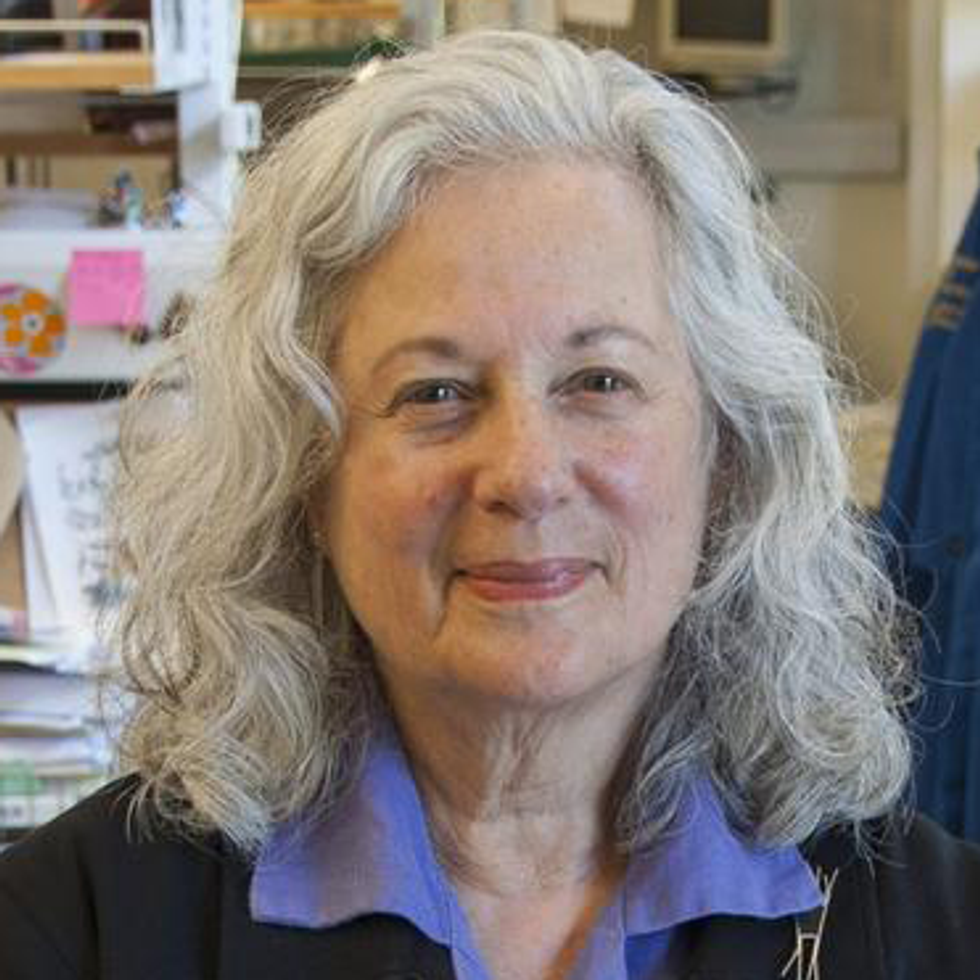
- Professor of the Graduate School and Chancellor's Professor of Chemistry
- University of California, Berkeley
- 2012 National Medal of Science Laureate
During the 20th and early 21st centuries, American science experienced a "Golden Age." While this may have been taken for granted by many of us in the scientific community, it is impossible to ignore its decline during the last four years. The neglect and disengagement of government support for key agencies, and science in general, have been devastating on many levels, the most immediate being the excessive and unnecessary number of deaths from COVID-19. The current pandemic is unlikely to be a standalone event and is connected to the ongoing loss of natural habitats within the larger "Climate Change" crisis.
The divestment of government from knowledge-based engagement in global warming has become both immoral and irresponsible, and the time for remediation is rapidly running out. I believe it is imperative that the next administration work quickly on multiple fronts that include a complete and rapid refocus on sustainable energy, a continuing investment in research toward carbon capture, and the pursuit of best practices that will support a new infrastructure that enables the necessary behavioral changes of all citizens. Unless we work quickly and effectively, the younger generation that includes our children (both biological and academic) are, I fear, inheriting an uninhabitable Planet Earth.
- - - - - - - - -
J. Michael Kosterlitz, Ph.D.
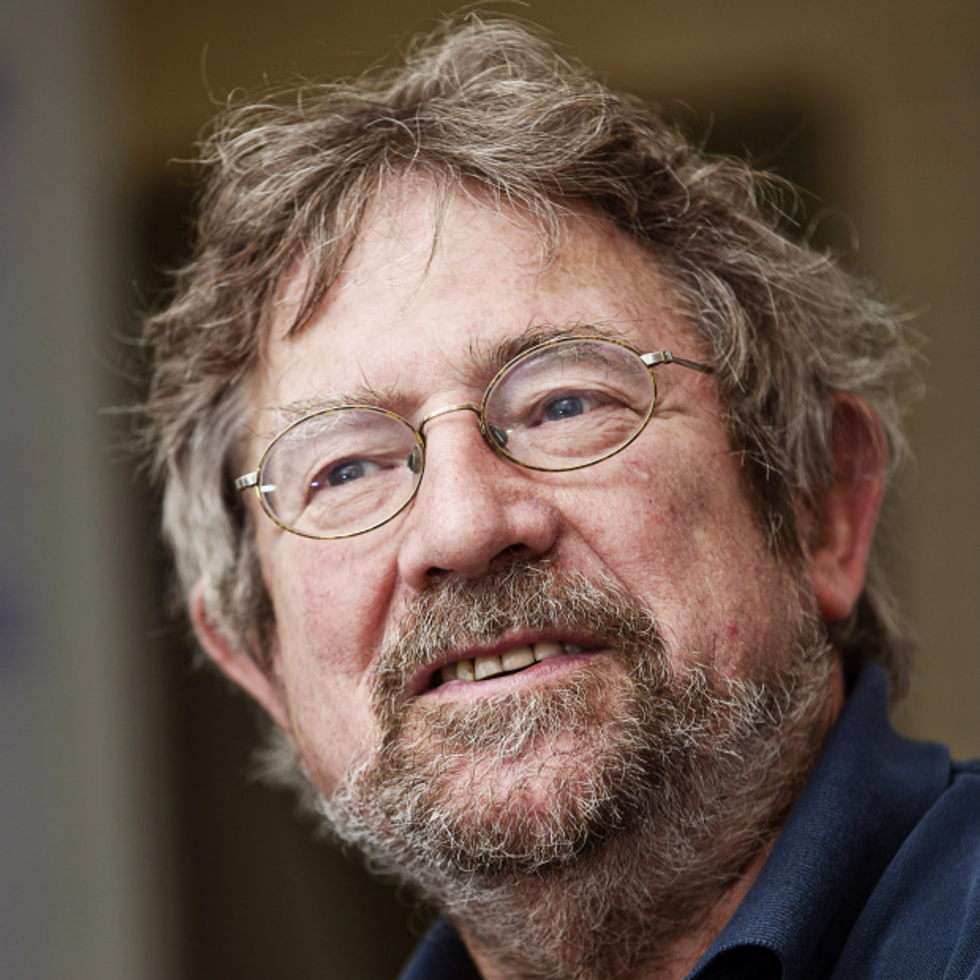
- Harrison E. Farnsworth Professor of Physics
- Brown University
- 2016 Nobel Laureate in Physics
There are two parts to the development of a device like the cell phone. First, you need the theoretical scientists who pursue various avenues of knowledge out of curiosity. Then, you need the practical scientists who today are called engineers or, in medicine, doctors. They take theoretical knowledge developed by theorists, play with it, and, with a lot of luck, develop some useful device based on the existing theoretical understanding. It is important to realize that both parts are needed. The basic theoretical understanding comes first followed by the development of some practical device which is not possible without the underlying theory. Both types of science are necessary for a final outcome. To an average person, who neither knows nor cares about science, only the engineering part seems important because the connection is more immediate. However, for the successful development of some useful device, both are usually equally important. Without the basic knowledge developed by the scientist doing apparently useless curiosity-driven research, the basic understanding for the practical development would not be there, so the device would not be built. Both the theoretical and the practical skills are needed and both should be adequately funded. One cannot exist without the other, and results from one feed into the other.
For the next four years of your presidency, one of the most important considerations is the health of the population. As we have all seen during the coronavirus pandemic, the whole country suffers when the population does not have adequate access to effective health care. This should be central to your presidency because the economy of the country depends critically on a healthy population. The key to a vibrant economy is adequate government funding of the whole scientific effort in as many branches as possible. Of course, there will be some inevitable wastage but, to keep America competitive, funding by government and supplemented by private agencies of all the real sciences is vital. I do not have the conceit to make specific suggestions about which branch of science or engineering is more important than another. They all deserve some funding until such time that they are proved to be useless or wrong like the old discredited phlogiston theory of burning.
- - - - - - - - -
Adrian R. Krainer, Ph.D.
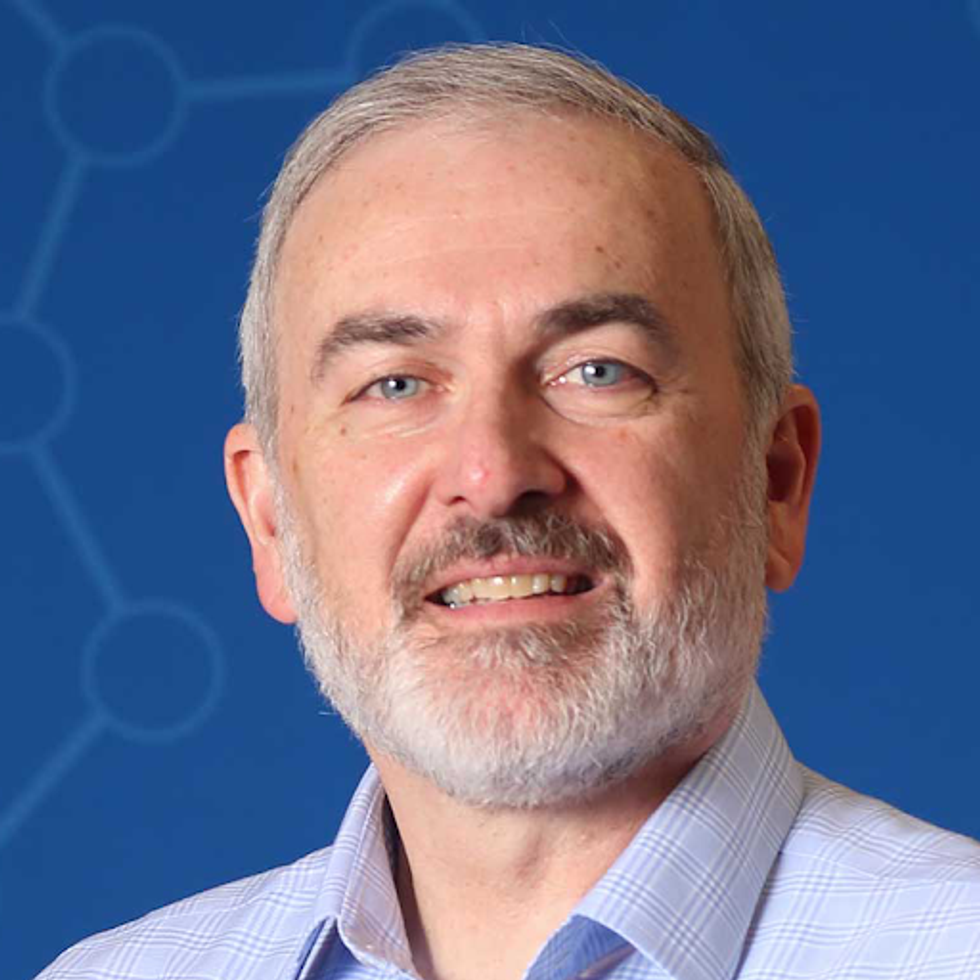
- St. Giles Foundation Professor
- Cold Spring Harbor Laboratory
- 2019 Breakthrough Prize in Life Sciences Laureate
Congratulations on your election. The next four years will pose major challenges, but we have the ability to address them effectively. I arrived in this country as a foreign student four decades ago, to begin my college education. I chose to study in the U.S. because I knew it was the top place in the world for biomedical research, and I was fortunate to have this opportunity. After graduate school, I accepted a job offer in academic research, I became a resident and then a citizen, and I never looked back. Together with my trainees—who came from the U.S. and 20 other countries—and our collaborators, we succeeded in developing an effective treatment for a devastating genetic disease, helping thousands of patients around the world live longer and more productive lives, and creating many jobs in the process. I know from this experience that government funding of basic research, e.g., through the NIH and NSF, plays an incredibly important role. This public investment ultimately improves the lives for all humanity, and along the way it results in job creation and attracts top talent from the U.S. and abroad. Other countries, notably China, have emulated us by making massive investments in education, science, technology, and infrastructure, with increasingly impressive results. To remain at the forefront, we must increase or at least sustain the pace of public investment in these key areas. Our institutions of higher learning continue to be a magnet for top talent from around the world. Some of these visitors eventually choose to stay, and we should welcome them; others will return home but maintain connections with, and good will toward, America. Science is a global endeavor, and challenges such as human diseases, pandemics, and climate change know no international boundaries. The U.S. must continue to lead the world in the search for effective solutions to these vexing problems.
- - - - - - - - -
John C. Mather, Ph.D.
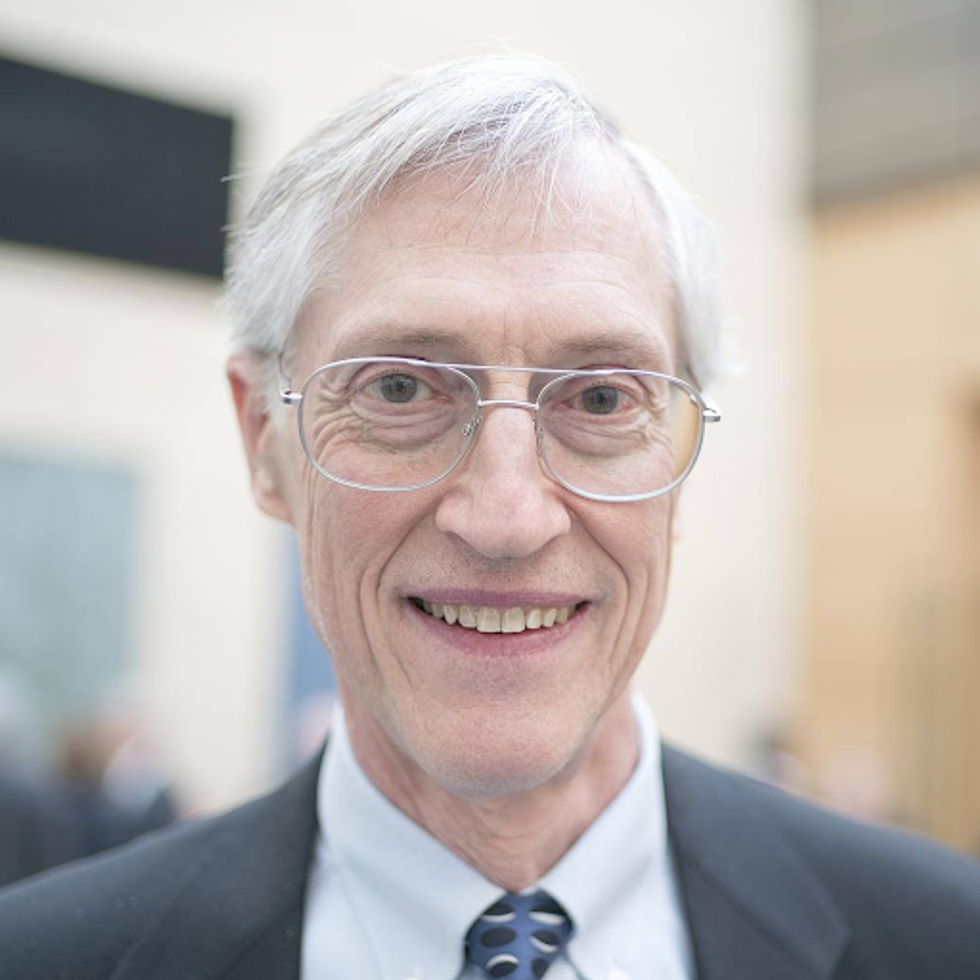
- 2006 Nobel Laureate in Physics
We need to upgrade the EPA into the National Environmental Defense Agency (NEDA) with a charter to protect all Americans as a matter of national security, equal in importance to the Department of Defense and the Department of Homeland Security. Failure to address climate change would be a worldwide and permanent catastrophe, so the NEDA would take all necessary actions including measurement, analysis, fundamental research, technology development and commercialization, disaster planning, infrastructure support for mitigation, and international leadership. Congress should support this work because it means jobs for millions of Americans, and taxpayers should support it because it preserves their wealth. The health and prosperity of Americans for the next four years, and on for at least the next thousand, depend now and always on noticing what's happening and responding accordingly. But we've been caught unprepared for multiple disasters, and more are coming. Some could be mitigated with planning and organization at all levels from international and federal to personal, and some need inventions and discoveries we don't yet have. Though the time scale is uncertain, the sea is rising every year, with no end in sight. When the sea rises six feet, over ten million Americans will lose their homes and land. When the tropics become unbearably hot, more millions will migrate to America. If a foreign power were taking our land, we would act. If a foreign power were setting the American West ablaze, we would act. If our farms were dying, we would act. Shall we not act? We need responsibility, authority, and a plan. It might sound impossible, but so were electricity, moon rockets, and the internet not long ago. We can do this, and you as President can make it happen.
- - - - - - - - -


